
° Semiconductor
MSM6895/6896
1/43
° Semiconductor
MSM6895/6896
Multi-Function PCM CODEC
GENERAL DESCRIPTION
The MSM6895/MSM6896, developed especially for low-power and multi-function applications
in ISDN telephone terminals, are single +5 V power supply CODEC LSI devices. The devices
consist of the analog speech paths directly connectable to a handset, the calling circuit directly
connectable to a piezosounder, the push-button key scanning interface between push buttons
and control processors, the dial tone generator, the B-channel interface, the CODEC, and the
processor interface. The functions can be controlled via the 8-bit data bus.
FEATURES
∑ Single +5 V Power Supply
∑ Low Power Dissipation
Power ON Mode
: 20 mW Typ. 53 mW Max.
CODEC Power Down Mode
: 10 mW Typ. 21 mW Max.
∑ In compliance with ITU-T's companding law
m-law
: MSM6895
A-law
: MSM6896
∑ Transmission clocks
Continuous CLK
: 64, 128, 256 kHz
Burst CLK
: 192, 384, 768, 1536, 2048 kHz
∑ Built-in PLL
∑ Built-in Reference Voltage Supply
∑ Ringing Tone
: Controlled by processor, 9 modes
∑ Ringing Tone Combination
: Controlled by processor, 6 modes
∑ Information Tone
: Controlled by processor, 9 modes
∑ Built-in PB Tone Generator
∑ B-Channel Selectable
∑ General Latch Output for Speech path Control
: 4 bits
∑ Watchdog Timer
: 500 ms
∑ Key Scanning I/O
Output
: 5 bits
Input
: 8 bits
∑ Direct Connection to Handset
∑ Built-in Preamplifier for Loudspeaker
∑ Handfree Interface
∑ Digital and Analog Interface for the phone-conference speech paths
∑ Package:
80-pin plastic QFP (QFP80-P-1420-0.80-BK)
(Product name : MSM6895GS-BK)
(Product name : MSM6896GS-BK)
E2U0022-28-81
This version: Aug. 1998
Previous version: Nov. 1996
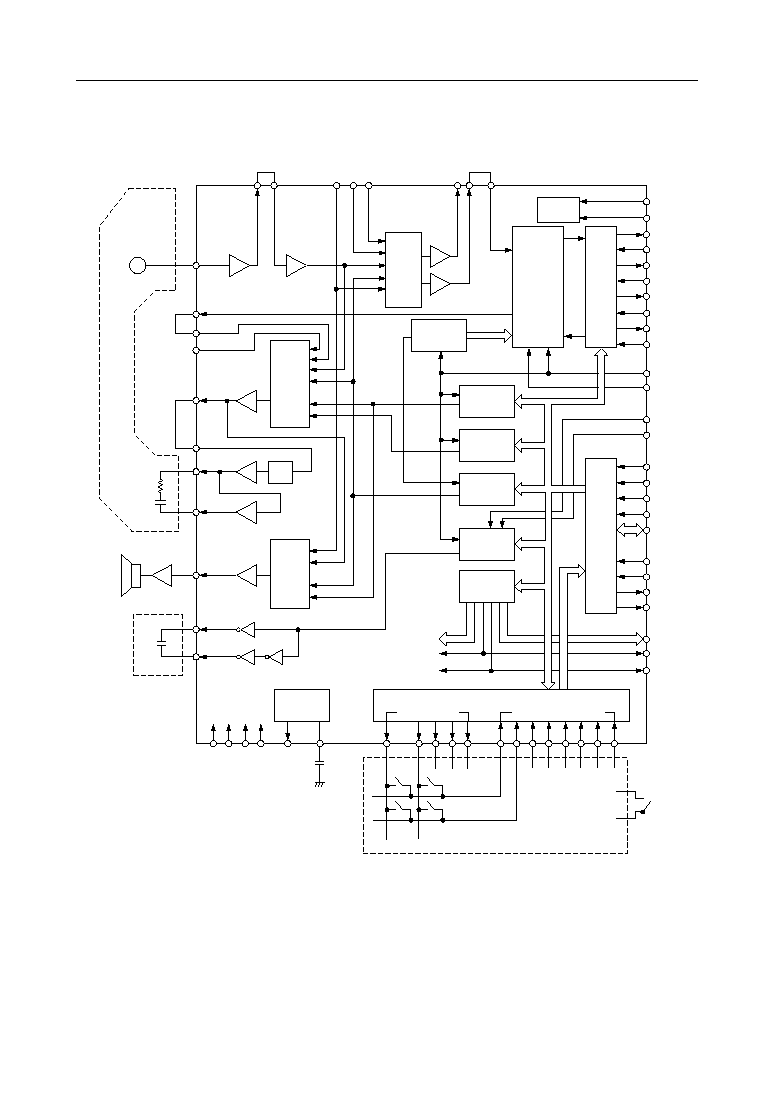
° Semiconductor
MSM6895/6896
2/43
BLOCK DIAGRAM
M
TPAO
MLDY
TPBI
TMX1I
TMX2I
T2O
T1O
CAI
B1T
B1R
B2T
B2R
BR1
BT1
BR2
BT2
CK8
CK64
WR
SW0
SW1
8K
64K
RD
CE
RESET
8BIT
Data Bus
AD0
AD1
INTT
TIME
4BIT
LOSS
LML
B1
B2
PI0 to
PI7
7
6
5
4
3
2
1
0
4
3
2
1
0
PO0 ~
PO4
KEY INTF.
PUSH-BOTTON SWITCH
KEY DATA INPUT
SCANNING
OUTPUT
SGGEN
VSGC
VSG
VD VAG VDG
VA
SA0
HANDSET
SPO
RMO1
RMO0
RMI
RPO
R2I
R1I
SW
&
MIX
TPAI
SW
CONT.
SW
&
MIX
SW
LATCH
S-TONE
R-TONE
F-TONE
GEN
GEN
GEN
DTMF TONE
GEN
PLL
AIN
AOUT
CODEC
SW
&
MIX
CAO
SA1
+
≠
LA ~
LD
SP
BUZZER
SWITCH
HOOK
MPU INTF.
CHANNEL SELECTOR
TEST
CK1536
TEST
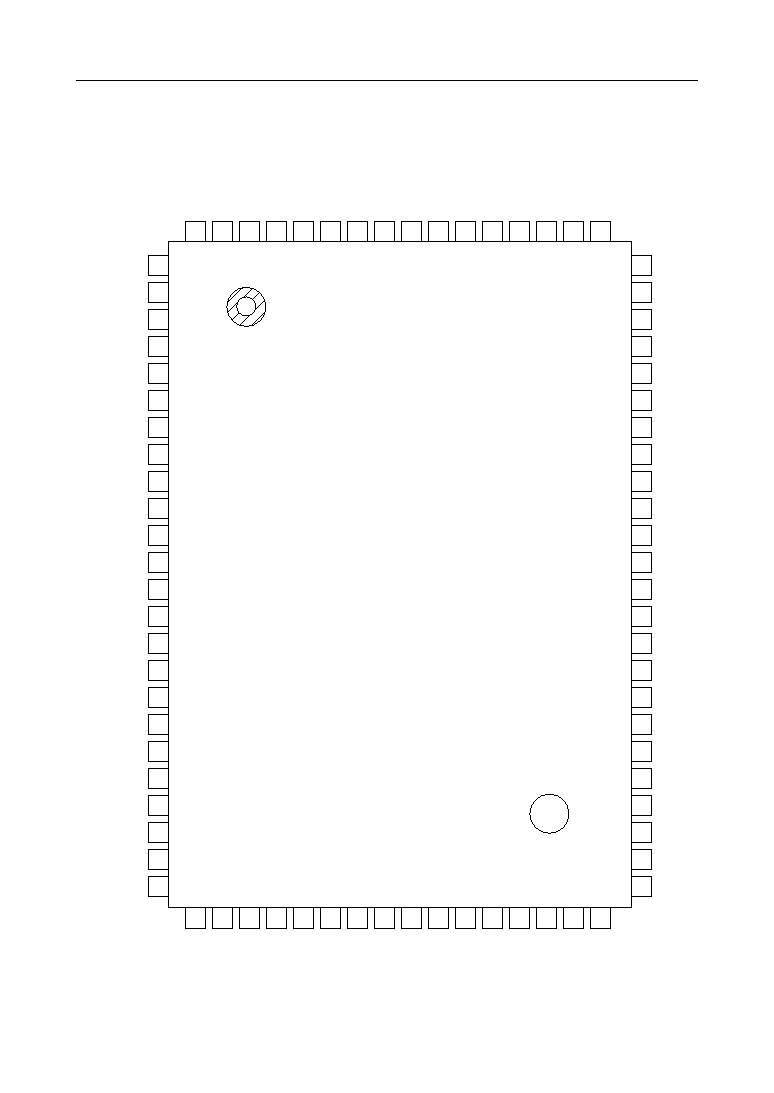
° Semiconductor
MSM6895/6896
3/43
PIN CONFIGURATION (TOP VIEW)
1
24
64
41
LB
LC
LD
SW0
SW1
VDG
VAG
SA0
SA1
NC
RM1
NC
RMO1
SPO
RPO
R2I
R1I
NC
NC
TMX2I
TPBI
VD
AD0
DB7
DB6
DB5
DB4
DB3
DB2
DB1
INTT
PI7
PI5
PI4
PI3
PI2
PI1
PI0
PO4
PO3
PO1
PI6
PO2
VSG
TPAO
T2O
NC
NC
VA
VSGC
TEST
CK8
LML
TIME
BR2
BR1
BT2
BT1
B1R
B1T
WR
LA
RESET
B2R
B2T
CE
RD
AD1
NC : No connect pin
RMO0
MLDY
TMX1I
TPAI
T1O
CAI
CA0
CK1536
CK64
LOSS
PO0
DB0
2
3
4
5
6
7
8
9
10
11
12
14
15
16
17
18
19
20
21
23
13
22
63
62
61
60
59
58
57
56
55
54
53
51
50
49
48
47
46
45
44
42
52
43
80
79
78
77
76
75
74
73
72
71
70
69
68
67
66
65
25
26
27
28
29
30
31
32
33
34
35
36
37
38
39
40
80-Pin Plastic QFP
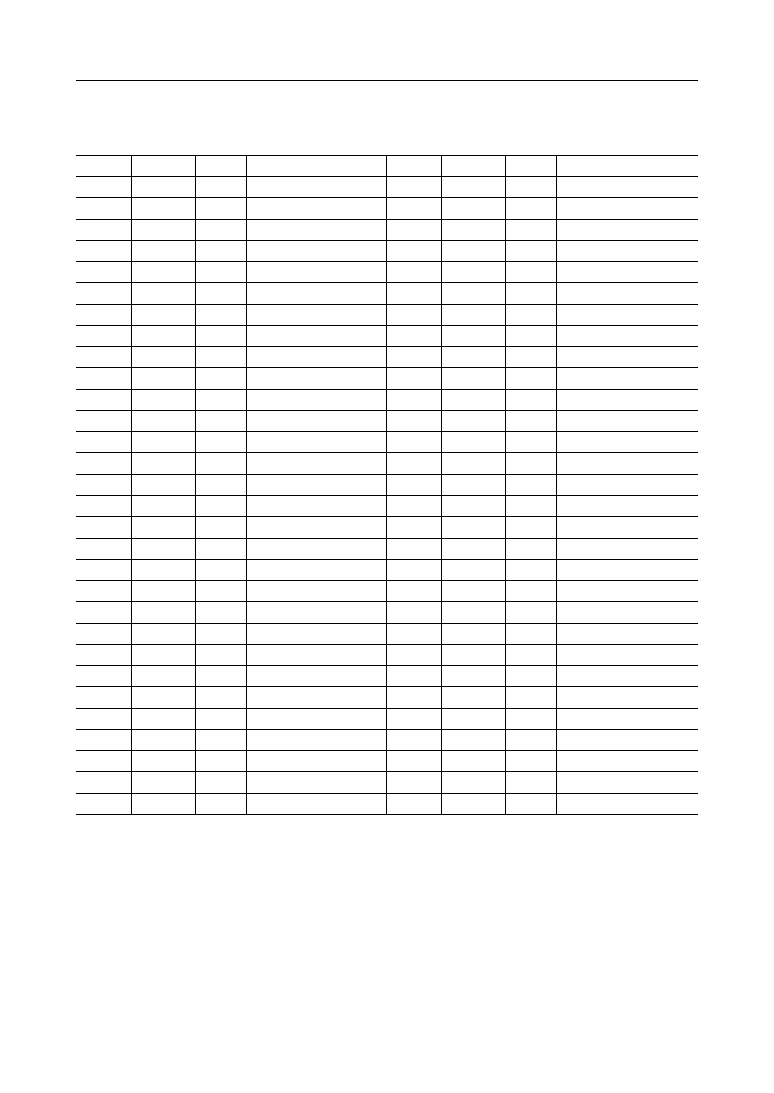
° Semiconductor
MSM6895/6896
4/43
PIN DESCRIPTION
Pin
Symbol
Type
Description
1
LB
DO
Data Latch Output B
2
LC
DO
Data Latch Output C
3
LD
DO
Data Latch Output D
4
SW0
DI
Sounder Tone Select (1)
5
SW1
DI
Sounder Tone Select (2)
6
VDG
--
Digital Ground
7
VAG
--
Analog Ground
8
SA0
DO
Sounder Output (+)
9
SA1
DO
Sounder Output (≠)
10
--
--
NC
11
RMI
AI
Receive Main Amp Input
12
--
--
NC
13
RMO0
AO
Receive MainAmp Output (+)
14
RMO1
AO
Receive MainAmp Output (≠)
15
SPO
AO
Speaker Pre-Amp Output
16
RPO
AO
Receive Pre-Amp Output
17
R2I
AI
Receive Addition Signal Input
18
R1I
AI
Receive Signal Input
19
--
--
NC
20
--
--
NC
21
TMX2I
AI
Transmit Addtion Signal Input (2)
22
MLDY
AI
Hold Tone Input
23
TPBI
AI
Transmit Pre-Amp (B) Input
24
TMX1I
AI
Transmit Addtion Signal Input (1)
25
TPAI
AI
Transmit Pre-Amp (A) Input
26
VSG
AO
Signal Ground
27
TPAO
AO
Transmit Pre-Amp (A) Output
28
T1O
AO
Transmit Signal Output (1)
29
T2O
AO
Transmit Signal Output (2)
30
--
--
NC
Pin
Symbol
Type
Description
31
--
--
NC
32
VA
--
+5 V Analog Power Supply
33
CAI
AI
Analog Signal Input to CODEC
34
VSGC
AO
Bypass Capacitor for Signal Ground
35
CAO
AO
Analog Signal Output from CODEC
36
TEST
DI
Control Input for Test
37
CK1536
DI
Clock Input for Test
38
CK64
DI
Transmission Colck Input
39
CK8
DI
Frame Synchronous Clock Input
40
LOSS
DO
Howler Tone Control Signal
41
PO0
DO
Key Scanning Signal Output (0)
42
PO1
DO
Key Scanning Signal Output (1)
43
PO2
DO
Key Scanning Signal Output (2)
44
PO3
DO
Key Scanning Signal Output (3)
45
PO4
DO
Key Scanning Signal Output (4)
46
PI0
DI
Key Scanned Data Input (0)
47
PI1
DI
Key Scanned Data Input (1)
48
PI2
DI
Key Scanned Data Input (2)
49
PI3
DI
Key Scanned Data Input (3)
50
PI4
DI
Key Scanned Data Input (4)
51
PI5
DI
Key Scanned Data Input (5)
52
PI6
DI
Key Scanned Data Input (6)
53
PI7
DI
Key Scanned Data Input (7)
54
INTT
DO
Interrupt Output
55
DB0
I/O
Data Bus (0)
56
DB1
I/O
Data Bus (1)
57
DB2
I/O
Data Bus (2)
58
DB3
I/O
Data Bus (3)
59
DB4
I/O
Data Bus (4)
60
DB5
I/O
Data Bus (5)

° Semiconductor
MSM6895/6896
5/43
PIN DESCRIPTION (Continued)
Pin
Symbol
Type
Description
61
DB6
I/O
Data Bus (6)
62
DB7
I/O
Data Bus (7)
63
AD0
DI
Address Data (0)
64
VD
--
+5 V Digital Power Supply
65
AD1
DI
Address Data Input (1)
66
WR
DI
Write Signal Input
67
RD
DI
Read Signal Input
68
CE
DI
Chip Enable
69
B1T
DO
B1 Channel Transmit Output
70
B2T
DO
B2 Channel Transmit Output
Pin
Symbol
Type
Description
71
B1R
B1 Channel Recive Input
72
B2R
B2 Channel Recive Input
73
BT1
B Channel Selector Transmit Data (1)
74
BT2
B Channel Selector Transmit Data (2)
75
BR1
B Channel Selector Receive Data (1)
76
BR2
B Channel Selector Receive Data (2)
77
RESET
Reset Input
78
TIME
Timer Output
79
LML
Hold Tone Control Output
80
LA
Data Latch Output (A)
DI
DI
DI
DI
DO
DO
DI
DO
DO
DO

° Semiconductor
MSM6895/6896
6/43
SW0
0
0
1
1
SW1
0
1
0
1
Tone combination 1
Tone combination 2
Tone combination 3
Tone combination 1
f1
1000 Hz
800 Hz
800 Hz
1000 Hz
f2
1333 Hz
1000 Hz
1000 Hz
1333 Hz
Wambling Cycle
16 Hz
16 Hz
8 Hz
16 Hz
1 / f1
Wambling Cycle Time
1 / f2
PIN AND FUNCTIONAL DESCRIPTIONS
LA, LB, LC, LD
General latch outputs for external control.
Statuses of these outputs are controlled via the processor interface. Refer to the description of the
control data for details.
SW0, SW1
External control signal inputs for setting the tone combination of the ringing tone.
When the external control for setting the tone combination is selected, the tone combination is
set by these pins.
VDG
Digital Ground.
VAG
Analog Ground.
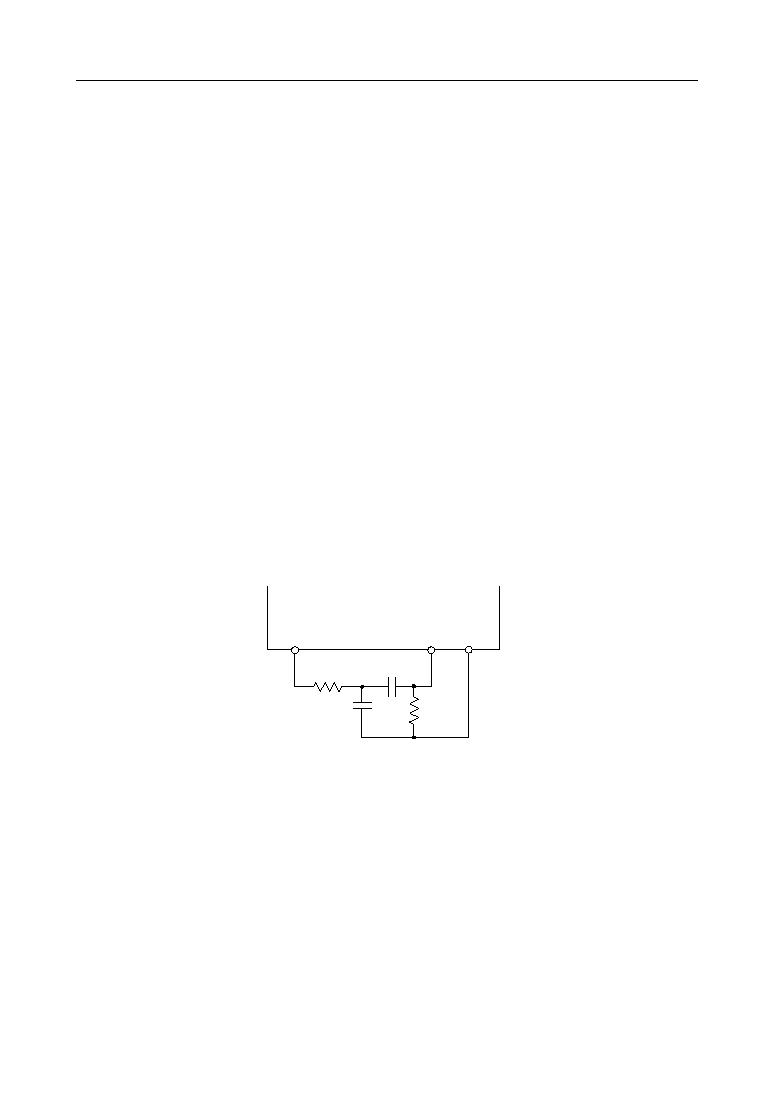
° Semiconductor
MSM6895/6896
7/43
SA0, SA1
Sounder (ringing tone) driving outputs.
The output signal on SA1 is inverted against the signal on SA0. The sounder circuit can be easily
configured by connecting a piezo-sounder between SA0 and SA1. Through processor control, the
ringing tone volume is selectable from four levels and one of six tone combinations is selectable.
Initially, the ringing tone volume is set at a maximum and the tone combination is set externally.
If these pins are used with no-load, tone volume cannot be controlled.
When tone volume control is required, a load resistor must be connected between SA0 and SA1.
RMI, RMO0, RMO1
Receive main amplifier input and outputs.
RMI is the main amplifier input and RMO0 and RMO1 are the main amplifier outputs. The
output signal on RMO1 is inverted against RMO0, so the earphone of a piezo electric-type
handset is directly connected between RMO0 and RMO1. The RMI input pin is connected to the
receive preamplifier output pin (RPO).
If the adjusting of receive path frequency characteristics is required, insert the following circuit
for adjustment. During initial setting, the speech path from RMI to RMO0 and RMO1 is
disconnected and the output of RMO0 and RMO1 is at the VSG level (VA/2). The speech path
is provided by processor control.
A circuit example for adjustment of frequency characteristics
RPO
R1
C2
R2
C1
RMI
VSG
SPO
Output of preamplifier for speaker.
Since the driving capability is 2.4 V
PP
for the load of 20 kW, SPO can not directly drive a speaker.
During initial setting, SPO is in a non-signal state (VSG level), and a speech signal, RTONE0,
RTONE1, FTONE, hold acknowledge tone, and PB signal acknowledge tone are output through
processor control.

° Semiconductor
MSM6895/6896
8/43
R1I, R2I, RPO
Receive preamplifier inputs and output.
R1I and R2I are for the inputs and RPO is for the output of the receive preamplifier. Normally,
R1I is connected via an AC-coupling capacitor to the CODEC analog output (CAO), and R2I is
used as the mixing signal input pin.
During initial setting, the RPO output is in non-signal state (VSG level), and speech signal,
RTONE1, RTONE2, FTONE, PB acknowledge tone, and side tone signal are output through
processor control. And if the three-party speech function is required, the R2I pin is connected to
the analog output of the other CODEC.
MLDY
Hold tone signal input.
This pin is connected to the output of external melody IC. Through processor control, the signal
applied to MLDYI is output from the TO output pin as a hold tone on the transmit path, and from
the SPO output pin as a hold acknowledge tone on the receive path.
TPBI
Transmit signal input.
When the handset is used, TPBI is connected to the transmit preamplifier output pin (TPAO). If
adjustment of frequency characteristics on the transmit path is required, insert a circuit for
adjustment of characteristic between TPAO and TPBI. Through processor control, the signal
applied to this pin is output via the T1O and T2O pins on the transmit path output and its side
tone via the RPO pin.
TPAO
TPBI
VSG
C3
R3
C4
R4
A circuit example for adjustment of frequency characteristics
TMX1I, TMX2I
Transmit addition signal inputs.
Through processor control, the input signals to TMX1I and TMX2I are added to the transmit
signal and are output to T1O and T2O respectively.

° Semiconductor
MSM6895/6896
9/43
TPAI, TPAO
The transmit preamplifier input and output.
TPAI is the input and TPAO is the output. Connect TPAI to the microphone of handset via an AC-
coupling capacitor if the DC offset appears at a transmit signal (offset from SGT). The transmit
path from TPAI to TPAO is always established regardless of processor control.
VSG
Signal ground level output.
The output level is equal to a half of the power supply voltage.
VSGC
Bypass capacitor connecting pin for signal ground level.
Insert a 0.1 mF capacitor with good higher frequency characteristic, between VSGC and VAG.
VA, VD
+5 V power supply.
VA is for an analog circuit and VD is for digital supply. Connect both VA and VD to the +5 V
analog path of the system.
CAI
CODEC analog output.
Connect CAI to T1O.
CAO
CODEC analog output.
Connect CAO to R1I via an AC-Coupling capacitor.

° Semiconductor
MSM6895/6896
10/43
TEST, CK1536
External master clock inputs.
Since the MSM6895 and MSM6896 contain PLL internally, the external clock signal is eliminated.
But the device can operate with the external clock through these pins.
When these pins are not used, leave these pins open or at 0 V.
Mode
Internal PLL
External master clock
TEST pin
0 V
Digital "1"
CK1536 pin
open or 0 V
Input the signal of 1536 kHz
When the external clock is used, the CK1536 signal is required to be synchronized in phase with
the CK8 signal.
CK64
CODEC PCM data input and output shift clock input.
When the continuous clock is set, the frequency is one of 64 kHz, 128 kHz, and 256 kHz. When
the burst clock is used, one of 192, 384, 768, 1536, and 2048 kHz is available. If the BCLOCK signal
is not applied, PLL is out of synchronization and goes into the self-running mode.
CK8
Synchronous signal input.
CODEC PCM data is sent out sequencially from MSB at the rising edge of the CK64 signal in
synchronization with the rise of the synchronous signal. PCM data should be entered from MSB
in synchronization with the rise of the synchronous signal. PCM data is shifted in at the falling
edge of the CK64 signal.
Since the CK8 signal is used for a trigger signal for PLL and for a clock signal to the tone generator,
if this signal is not applied, not only any tone can not be output, but also PLL goes out of
synchronization and goes into self-running mode. This signal has to be synchronous with the
CK64 signal and its frequency must be within 8 kHz
±
50 ppm to ensure the CODEC AC
characteristics (mainly frequency characteristics).
LOSS
Signal output for controlling the external circuits.
When the howler tone of sounder is selected through processor control, the output is in a digital
"1".
Initially, this output is set to a digital "0".
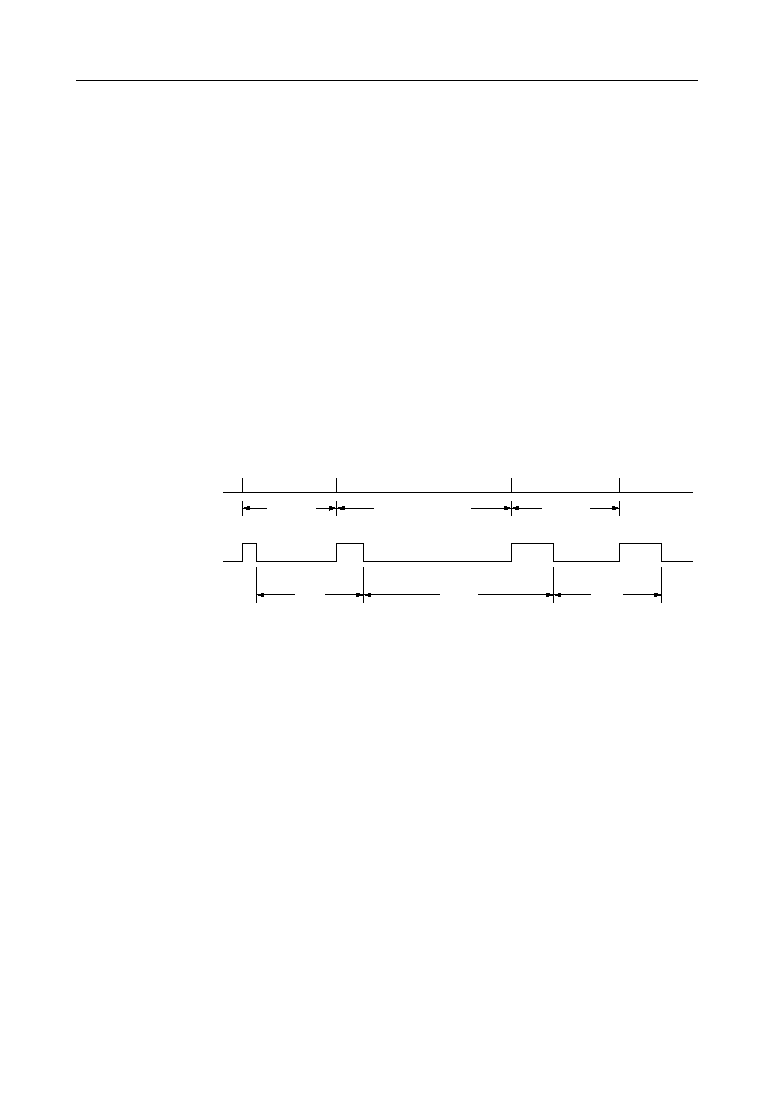
° Semiconductor
MSM6895/6896
11/43
PO0, PO1, PO2, PO3, PO4, PO5, PO6, PO7
Key scanning outputs.
These output pins need external pull-up resistors because of their open- drain circuits. Through
processor control, these outputs can be set open or to digital "0". Initially, these outputs are set
at an opened state.
PI0, PI1, PI2, PI3, PI4, PI5, PI6, PI7
Key scanning inputs.
In the READ mode, data on PI0 to PI7 can be read out of the processor via data bus (DB0 to DB7).
INTT
Interrupt signal output to the processor.
INTT outputs interrupt signals (digital "0") at intervals of 8 ms by the interrupt release control
signal from the processor. INTT does not output any signal while no CK8 signal is input.
Interrupt release signal
from processor
INTT output
t < 8 ms
8 ms < t < 16 ms
t < 8 ms
8 ms
16 ms
8 ms
DB0, DB1, DB2, DB3, DB4, DB5, DB6, DB7
Data bus inputs and outputs.

° Semiconductor
MSM6895/6896
12/43
AD0, AD1
Address data inputs for the internal control registers.
Addressing of the internal control registers is executed by AD0 and AD1 and sub address data,
DB7 and DB6.
WR
Write signal for internal control registers.
Data on the data bus is written into the registers at the rising edge of WR under the condition of
digital "0" of CE (Chip Enable). While CE is in digital "1" state, WR becomes invalid. The Write
cycle is a minimum of 2 ms, but if the CK64 and CK8 signals are silent, the write cycle requires
a minimum of 50 ms.
A minimum of 2 ms specified as the write cycle is valid 10 ms after CK64 and CK8 signals are input.
RD
Read signal input to read PI0 to PI7 out of the processor.
When CE and RD are in digital "0" state, the digital values on PI0 to PI7 are output onto the data
buses DB0 to DB7. While CE is in digital "1" state, the RD signal becomes invalid.
Write
Read
AD1
AD0
DB7
DB6
0
0
0
0
0
0
0
1
0
0
1
0
0
0
1
1
0
1
--
--
1
0
--
--
1
1
0
0
1
1
0
1
1
1
1
0
1
1
1
1
1
0
--
--
Function
Sounder Control
Control of function key acknowledge tone
PB tone control
Control of the internal control latch and the general-purpose latch,
Reset control of the watch dog timer.
Control of channel selector
Key scanning output control, interrupt release control
Volume control and tone combination control of sounder
CODEC power down control
Level control of transmit path, PB tone, and Hold tone, Gain control of
receive path
Frequency control of howler tone
Read of the key scanning data

° Semiconductor
MSM6895/6896
13/43
CE
Chip Enable signal input.
When CE is in digital "0" state, WR and RD are valid.
B1T, B2T, B1R, B2R
B channel interface inputs and outputs.
B1T and B2T are outputs, and B1R and B2R are inputs. Through channel control by the processor,
various data paths are set. The CODEC input and output signals are input and output via these
pins.
Initially the B1T and B2T outputs are fixed in a digital "1", and the B1R and B2R inputs are
neglected.
BR1, BR2, BT1, BT2
External digital inputs and outputs to the B-channel.
BR1 and BR2 are outputs, and BT1 and BT2 are inputs. Through channel control by processor,
the digital paths are set between these input and output pins and the B channel.
These signals are applied to another CODEC interface of three-party the speech path and to the
interface of 64 kbps at the rate adaptor circuit.
Initially the BR1 and BR2 outputs are fixed in a digital "1", and the BT1 and BT2 inputs are
neglected.
RESET
Reset signal input.
Digital "0" input to RESET makes all of internal control registers to be initialized. When powered
on, this RESET signal should be input for initializing the system.
TIME
Watchdog timer output.
When the processor does not reset the timer, the 500 ms period (Digital "0" : 4 ms) digital signal
is continuously output. When RESET is at digital "0", this timer is reset. And, in about 500 ms after
RESET goes to digital "1", the first timer output signal is issued and then the timer signal is output
at intervals of a 500 ms. If the CK8 signal is not input, the TIME signal is not output.
LML
Control signal output for external hold tone generator.
LML goes to digital "1" state when the hold tone transmit mode on transmit path or the hold
acknowledge tone mode on receive path is selected. During initialized state, LML is in digital "0"
state.
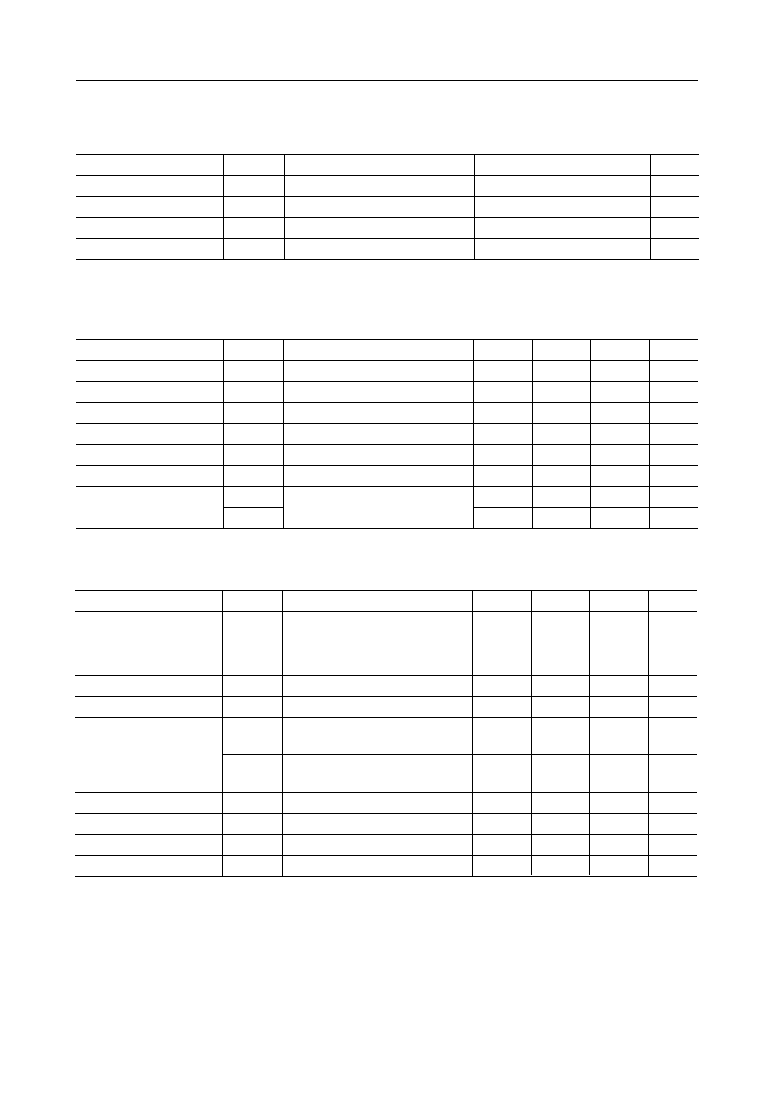
° Semiconductor
MSM6895/6896
14/43
ABSOLUTE MAXIMUM RATINGS
Parameter
Symbol
Condition
Rating
Unit
Power Supply Voltage
V
DD
0 to 7
V
Analog Input Voltage
V
AIN
≠0.3 to V
DD
+ 0.3
Digital Input Voltage
V
DIN
≠0.3 to V
DD
+ 0.3
Storage Temperature
T
STG
≠55 to +150
VAG, VDG = 0 V
--
VAG, VDG = 0 V
VAG, VDG = 0 V
V
∞C
V
RECOMMENDED OPERATING CONDITIONS
Recommended Operating Conditions (CODEC Digital Interface)
F
C
8.0
--
--
Clock Frequency
kHz
Sync Pulse Frequency
Clock Duty Ratio
F
S
D
C
CK64
CK8
CK64
kHz
50
40
60
%
CK64∆CK8
See Fig.1
Sync Pulse Setting Time
t
XS
--
--
100
ns
CK8∆CK64
See Fig.1
t
SX
--
--
100
ns
Sync Pulse Width
t
WS
--
--
1 CK64
100
ms
Data Setup Time
t
DS
B1R, B2R
--
100
--
ns
Data Hold Time
t
DH
B1R, B2R
--
100
--
ns
Allowable Jitter Width
--
CK8
--
--
500
ns
Min.
Max.
Parameter
Symbol
Condition
Typ.
Unit
256
128
--
--
64
Input High Voltage
V
D
VA, VD (Voltage must be fixed)
5.0
4.75
5.25
Ta
--
+25
≠10
+70
Power Supply Voltage
V
V
IH
All Digital Input Pins
--
2.2
V
DD
V
Input Low Voltage
V
IL
All Digital Input Pins
--
0
0.8
V
Operating Temperature
∞C
Digital Input Rise Time
t
Ir
All Digital Input Pins
--
--
50
ns
Digital Input Fall Time
t
If
All Digital Input Pins
--
--
50
ns
PO0 to PO4 Output
--
10
--
Digital Output Load
R
DL
kW
--
--
100
C
DL
pF
Min.
Max.
Parameter
Symbol
Condition
Typ.
Unit
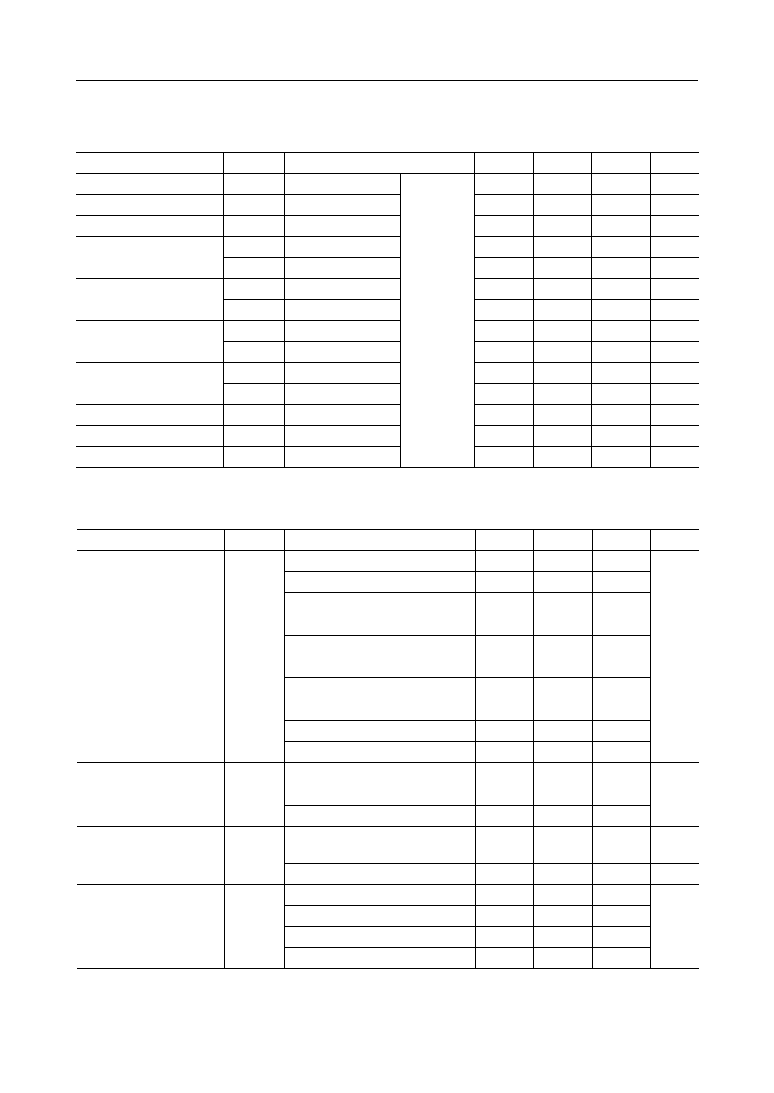
° Semiconductor
MSM6895/6896
15/43
Recommended Operating Conditions (Processor Digital Interface)
P
W
Write Pulse Period
ns
WR
--
2000
--
T
W
Write Pulse Width
ns
WR
--
100
--
T
R
Read Pulse Width
ns
RD
--
200
--
AD0, AD1∆WR
ns
--
10
--
t
AW1
AD0, AD1∆RD
ns
--
80
--
t
AR1
Address Data
Setup Time
WR∆AD0, AD1
ns
--
50
--
t
AW2
RD∆AD0, AD1
ns
--
10
--
t
AR2
Address Data
Hold Time
CE∆WR
ns
--
10
--
t
CW1
CE∆RD
ns
--
80
--
t
CR1
CE Setup Time
WR∆CE
ns
--
50
--
t
CW2
RD∆CE
ns
--
10
--
t
CR2
CE Hold Time
DB0 to 7∆WR
Data Setup Time
ns
--
110
--
t
DW1
WR∆DB0 to 7
Data Hold Time
ns
--
20
--
t
DW2
RESET
Reset Pulse Width
ns
--
100
--
t
WRES
See Fig.2
Min.
Max.
Parameter
Symbol
Condition
Typ.
Unit
Recommend Operating Conditions (Analog Interface)
R
AL
TPAO, T1O, T2O,
--
20
--
Analog Load Resistance
kW
RMO0, RMO1
--
3
--
C
AL
TPAO, T1O, T2O,
RPO, SPO, CAO
--
--
100
Analog Load Capacitance
RMO0, RMO1
--
--
55
pF
nF
TPAI, TPBI, RMI
--
≠10
+10
MLDYI, TMX1I, TMX2I
--
≠50
+50
R1I, R2I
--
≠25
+25
CAI
--
≠100
+100
Allowable Analog
Input Offset Voltage
V
off
mV
Min.
Max.
Parameter
Symbol
Condition
Typ.
Unit
RPO, SPO, CAO
--
0.24
TPAI
--
--
--
--
--
--
--
--
--
--
--
--
--
0.31
TPBI
2.40
TMX1I, TMX2I
(Transmit Gain: Typ.)
1.90
Analog Input Voltage
V
AIN
MLDYI
V
PP
(Transmit Gain: Typ.)
1.20
R1I, R2I
(Transmit Gain: Typ.)
0.51
RMI
2.40
CAI
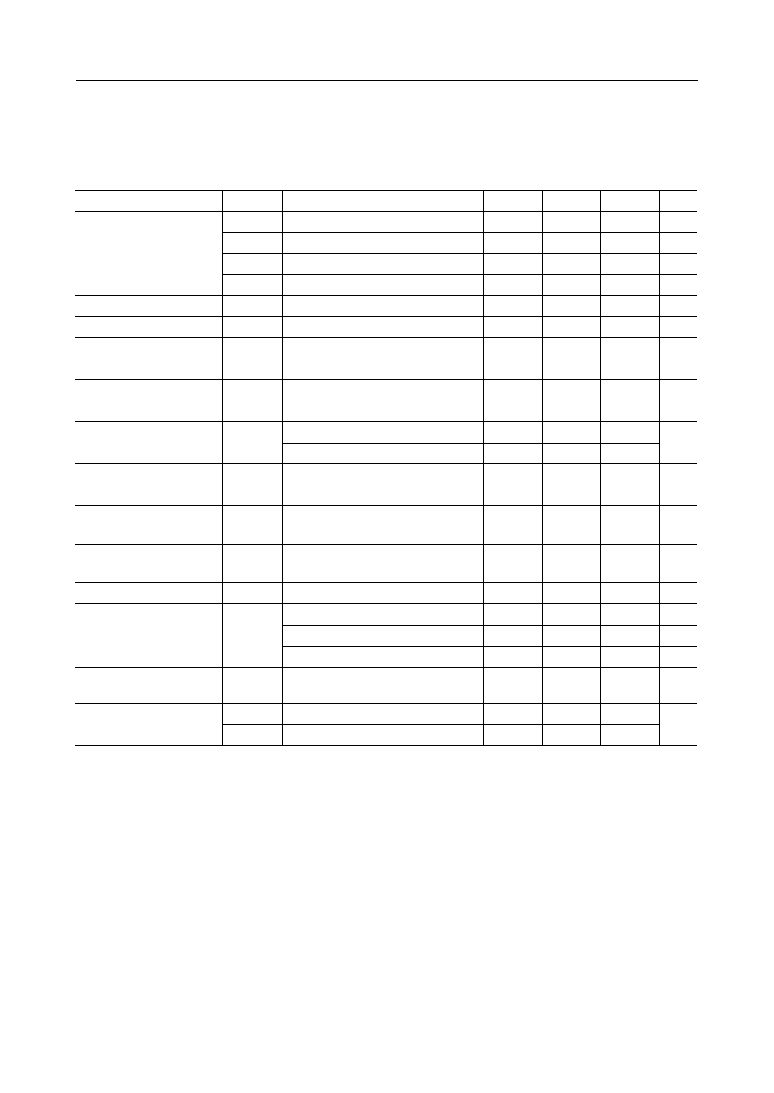
° Semiconductor
MSM6895/6896
16/43
ELECTRICAL CHARACTERISTICS
DC and Digital Interface Characteristics
I
DD1
Operating Mode (No Signal, Sounder OFF)
3.9
--
10.0
Power Supply Current
mA
(V
DD
= 5 V ±5%, Ta = ≠10∞C to +70∞C)
I
DD2
CODEC Receive Power Down
3.3
--
8.0
mA
I
DD3
CODEC Transmit Power Down
2.8
--
7.0
mA
Input High Voltage
V
IH
--
--
2.2
V
DD
V
Input Low Voltage
V
IL
--
--
0.0
0.8
V
--
--
--
2.0
mA
I
IH
High Input Leakage
Current
--
--
--
0.5
mA
I
IL
Low Input Leakage
Current
I
OH
= 0.4 mA
I
OH
= 1 mA
2.4
3.8
Digital Output High
Voltage
V
OH
--
V
I
OL
= ≠1.6 mA
0.0
Digital Output Low
Voltage
V
OL
--
0.4
V
--
Digital Output Leakage
Current
I
O
--
--
10
mA
TPAO, T1O, T2O,
CAO, RPO, RMO1, RMO2, SPO
Analog Output Offset
Voltage
V
off
--
≠100
+100
mV
Input Capacitance
C
IN
--
5
--
--
pF
TPAI, TPBI, MLDYI, RMI
10
--
--
MW
TMX1I, TMX2I, R1I, R2I
--
10
--
kW
CAI (fin : < 4 kHz)
1
--
--
MW
Analog Input Resistance
R
IN
VA/2
≠0.05
VA/2
+0.05
VSG Voltage
--
--
VA/2
V
I
SGF
FORCE Current
1.5
1.0
--
I
SGS
SINK Current
0.5
0.3
--
VSG Drive Current
mA
V
DD
V
DD
--
Min.
Max.
Parameter
Symbol
Condition
Typ.
Unit
I
DD4
CODEC Transmit/Receive Power Down
2.2
--
4.0
mA
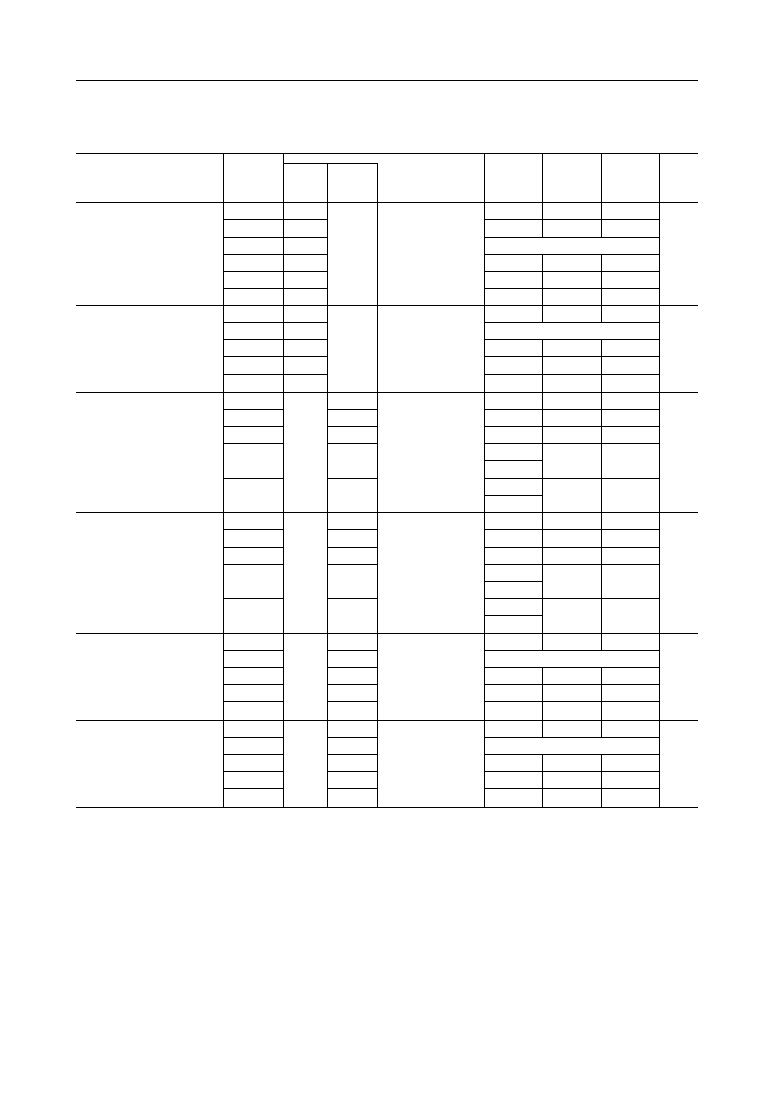
° Semiconductor
MSM6895/6896
17/43
AC Characteristics 1 (CODEC)
Loss T1
Loss T2
Loss T3
Loss T4
Loss T5
Loss T6
Transmit Frequency
Response
dB
Parameter
Symbol
Condition
Typ.
Unit
Min.
Max.
Freq.
(Hz)
Level
(dBm0)
60
300
1020
2020
3000
3400
27
+0.07
≠0.03
+0.06
0.38
20
≠0.15
≠0.15
≠0.15
0.0
--
+0.20
+0.20
+0.20
0.80
0
Reference
Loss R1
Loss R2
Loss R3
Loss R4
Loss R5
300
1020
2020
3000
3400
≠0.03
≠0.02
+0.15
0.56
≠0.15
≠0.15
≠0.15
0.0
+0.20
+0.20
+0.20
0.80
Reference
Receive Frequency
Response
dB
0
SD T1
SD T2
SD T3
SD T4
SD T5
43.0
41.0
38.0
31.0
26.5
35
35
35
29
28
24
23
--
--
--
--
--
dB
1020
3
0
≠30
≠40
≠45
Transmit Signal to
Distortion Ratio
*1
SD R1
SD R2
SD R3
SD R4
SD R5
43.0
41.0
40.0
34.0
31.0
37
37
37
31
30
26
25
--
--
--
--
--
dB
1020
3
0
≠30
≠40
≠45
Receive Signal to
Distortion Ratio
*1
GT T1
GT T2
GT T3
GT T4
GT T5
+0.01
+0.13
+0.32
+0.64
≠0.3
≠0.3
≠0.6
≠1.5
+0.3
+0.3
+0.6
+1.5
Reference
Transmit Gain
Tracking
dB
1020
3
≠10
≠40
≠50
≠55
GT R1
GT R2
GT R3
GT R4
GT R5
0.0
≠0.06
≠0.20
≠0.27
≠0.2
≠0.2
≠0.4
≠0.8
+0.2
+0.2
+0.4
+0.8
Reference
Receive Gain
Tracking
dB
1020
3
≠10
≠40
≠50
≠55
(V
DD
= 5 V ±5%, Ta = ≠10∞C to +70∞C)
*2
*2
*2
*2
Notes:
*1 Psophometric filter is used
*2 Upper is specified for the MSM6895, lower for the MSM6896
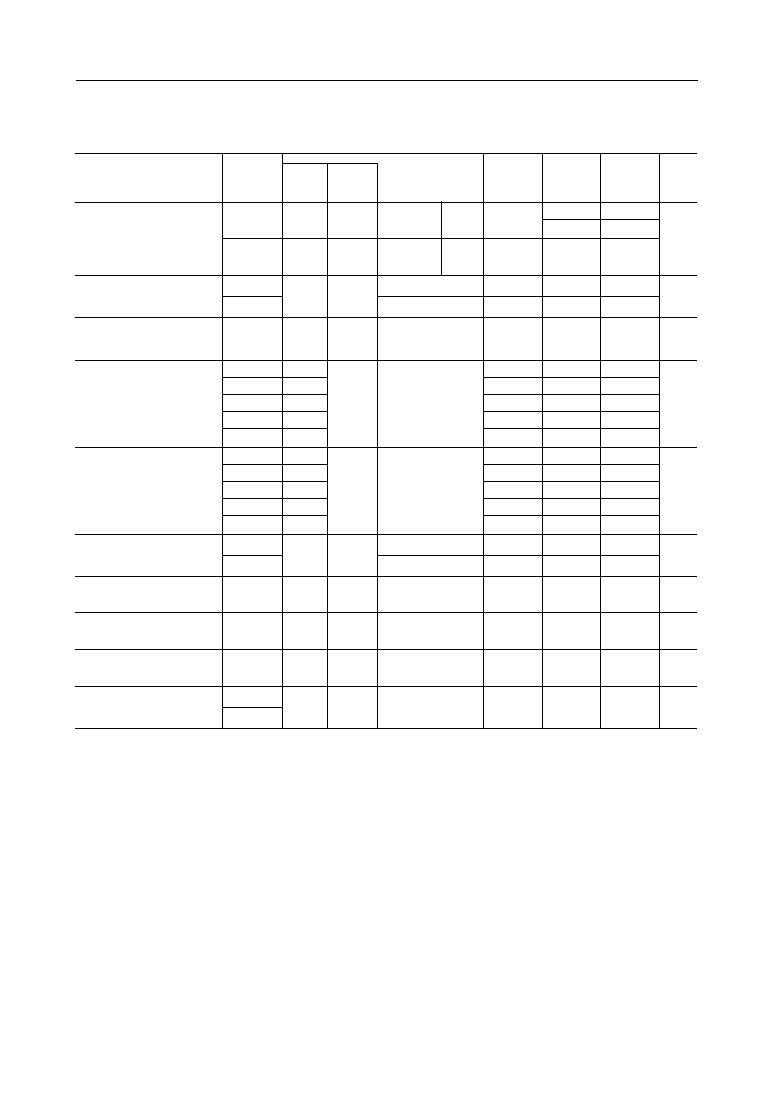
° Semiconductor
MSM6895/6896
18/43
AC Characteristics 1 (CODEC) (Continued)
tgd T1
tgd T2
tgd T3
tgd T4
tgd T5
Transmit Group Delay
ms
500
600
1000
2600
2800
0.19
0.12
0.02
0.05
0.08
--
--
--
--
--
0.75
0.35
0.125
0.125
0.75
0
*4
tgd R1
tgd R2
tgd R3
tgd R4
tgd R5
Receive Group Delay
ms
500
600
1000
2600
2800
0.0
0.0
0.0
0.09
0.12
--
--
--
--
--
0.75
0.35
0.125
0.125
0.75
0
*4
CR T
Transmit ∆ Receive
86
66
--
CR R
Receive ∆ Transmit
78
70
--
1020
0
Crosstalk Attenuation
dB
4.6 kHz to
72 kHz
Discrimination
DIS
0 to 4000 Hz
≠25
32.0
30
--
dB
300 to
3400
Out-of-band Signal
Spurious
S
4.6 kHz to 100 kHz
0
≠37.5
--
≠35
dBmO
fa = 470
fb = 320
Intermodulation Distortion
IMD
2fa≠fb
≠4
≠52
--
≠35
dBmO
PSR T
*5
30
--
--
PSR R
0 to 50
kHz
100
mV
pp
Power Supply Noise
Rejection Ratio
dB
Parameter
Symbol
Condition
Typ.
Unit
Min.
Max.
Freq.
(Hz)
Level
(dBm0)
(V
DD
= 5 V ±5%, Ta = ≠10∞C to +70∞C)
AIN = SG
*1
Nidle T
--
--
--
*2
≠73.5
≠71
≠70
≠69
*1
*3
Nidle R
--
--
--
≠77.8
≠74
Idle Channel Noise
dBmOp
AV T
0.5671
0.6007
0.6363
AV R
0.5671
0.6007
0.6363
1020
0
Vrms
Absolute Amplitude
A to A
CK64 = 64 kHz
Absolute Delay Time
Td
1020
0
--
0.58
0.60
ms
Transmit CODEC
Receive CODEC
Notes:
*1 Psophometric filter is used
*2 Upper is specified for the MSM6895, lower for the MSM6896
*3 PCM data for MSM6895: All "1"
PCM data for MSM6896: "11010101"
*4 Minimum value of the group delay distortion
*5 The measurement under idle channel noise
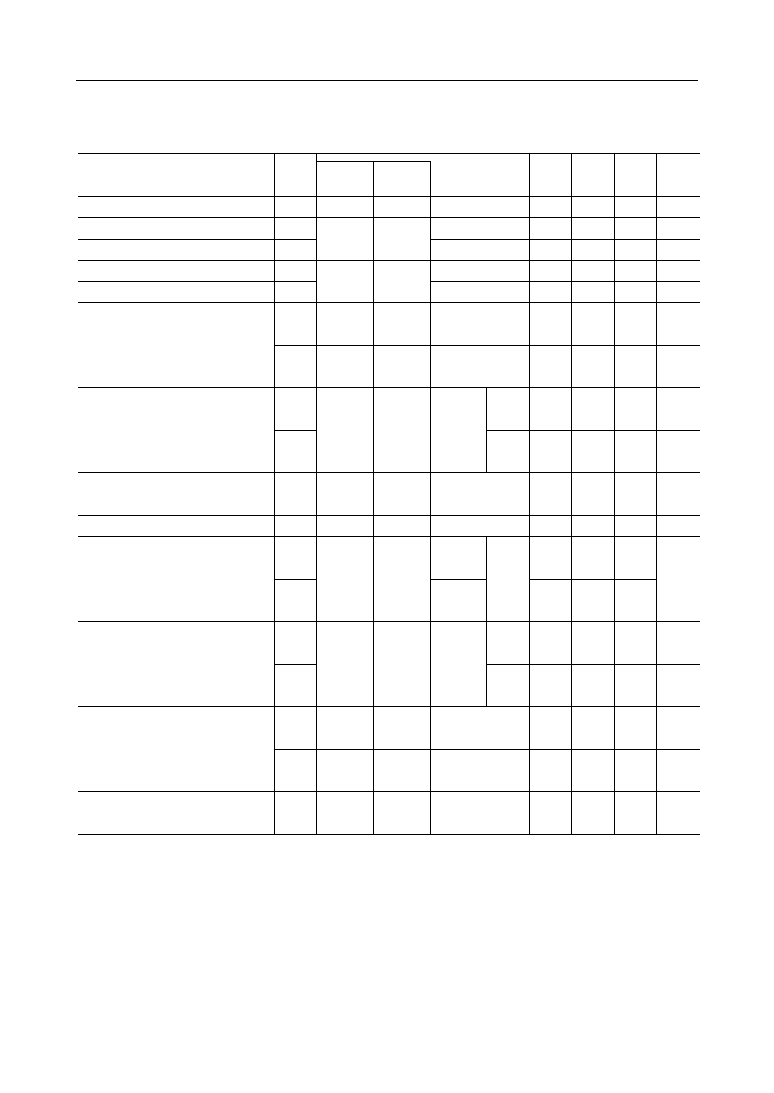
° Semiconductor
MSM6895/6896
19/43
AC Characteristics 2 (Transmit Path)
Parameter
Symbol
Level
(dBV)
Max.
Unit
(V
DD
= 5 V ±5%, Ta = ≠10∞C to +70∞C)
Freq.
(Hz)
Condition
GTPA
1020
22.0
dB
GTPB1
19.7
dB
In-Channel PB Signal Output Level
VPBT1
≠13.4
dBV
--
VPBT2
≠13.4
--
GPBT1
≠1.0
dBV
In-Channel PB Signal
≠4.0
+0.9
%
--
≠30
Pre-Amp Gain
≠24.4
--
--
GPBT2
DfPBT
THDPBT
--
--
Transmit Path 2 Gain
1020
≠22.1
--
GPAT1
0.0
GPAT2
0.0
dB
Hold Tone Path Gain
1020
≠22.4
Hold Tone Path Gain Setting
RG1 PAT
≠1.0
dB
≠22.4
1020
RG2 PAT
≠4.0
dB
Idle Channel Noise
Ni TPA
--
dBV
--
--
Ni TPB
--
dBV
--
--
Maximum Output Voltage Swing
VOT
--
V
PP
--
--
GTPB2
19.7
Transmit Path 1 Gain
dB
GTMX1
+2.0
dB
Transmit Addition Signal 2 Gain
1020
≠4.4
GTMX2
+2.0
Transmit Addition Signal 1 Gain
dB
T1O
T2O
Typ.
20.0
17.7
≠15.4
≠15.4
≠3.0
≠6.0
--
≠35
≠2.0
≠2.0
≠3.0
≠6.0
≠93
≠91
--
17.7
0.0
0.0
Min.
18.0
15.7
≠17.4
≠17.4
≠5.0
≠8.0
≠0.9
--
≠4.0
≠4.0
≠5.0
≠8.0
--
--
2.4
15.7
≠2.0
≠2.0
--
Frequency Deviation
In-Channel PB Signal Distortion
--
dB
TPAO, T1O,
T2O, R
L
= 20 kW
T1O, T2O
Meature at TPAO
TPAI: 510 W at termination
In-Channel PB Signal Output
Level Setting
*6
*6
≠3 dB
≠
6 dB
For
typical
setting
MLDYI-T1O
MLDYI-T2O
Set at
typical
gain
In-Band Distortion
T1O, T2O
≠ 3 dB
≠
6 dB
For
typical
setting
Set at
typical gain
Set at
typical gain
TMX1I-T2O
TPBI-T2O
TMX1I-T1O
TPBI-T1O
TPAI-TPAO
dB
dB
Note:
*6 Noise band width: 0.3 kHz to 3.4 kHz, non-weighted
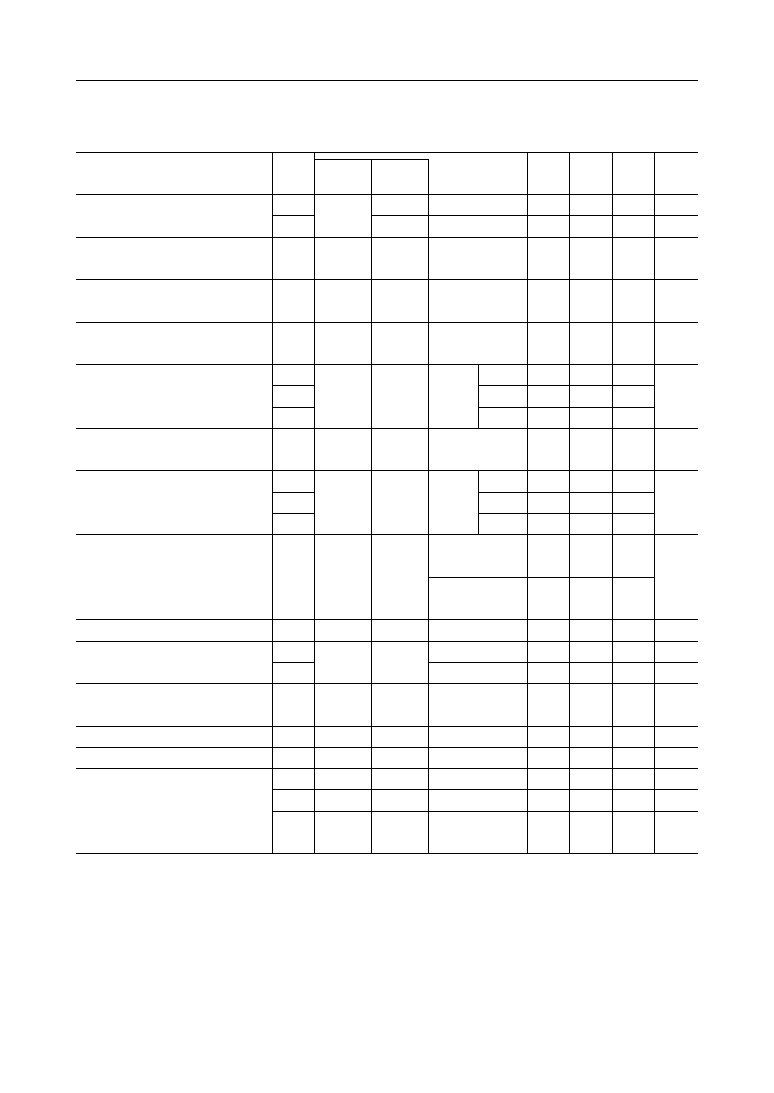
° Semiconductor
MSM6895/6896
20/43
AC Characteristics 3 (Receive Path)
GRMO0
1020
17.3
dB
GRMO1
17.3
dB
Receive Signal Path Gain Setting
RG RPA1
5.0
RG RPA3
11.0
≠1.0
dB
≠26.2
Receive Main Amp. Gain
≠19.4
VPBRP
--
Receive Main Amp.
1020
≠19.4
DGRMO
--
dB
deg
Receive Main Amp.
1020
≠19.4
DPRMO
--
Output Gain Difference
15.3
15.3
3.0
9.0
≠3.0
≠28.2
≠0.01
≠179.6
13.2
13.2
1.0
7.0
≠5.0
≠30.2
--
--
PB Acknowledge Tone Output Level
--
dBV
SPO
MLDYI-SPO
+3 dB
+6 dB
+9 dB
RMO0/RMO1
RMO0/RMO1
RMI-RMO1
RMI-RMO0
≠19.4
RG RPA2
8.0
≠23.4
dB
1020
6.0
4.0
Receive Addition Signal Path Gain
≠4.0
dB
≠14.4
GRPB
1020
≠6.0
≠8.0
R2I-RPO
Receive Addition Signal Path
RG RPB1
5.0
RG RPB3
11.0
For
typical
setting
3.0
9.0
1.0
7.0
+3 dB
+6 dB
+9 dB
RG RPB2
8.0
≠14.4
dB
1020
6.0
4.0
GPAS
1020
Hold Acknowledge Tone Path Gain
≠7.4
≠28.1
≠30.1
≠32.1
dBV
RPO
VPBRP
+0.9
%
--
≠0.9
RPO, SPO
DfPBR
--
PB Acknowledge Tone Frequency
--
≠30
dB
≠35
--
RPO, SPO
THD PBR
--
PB Acknowledge Tone Distortion
--
12.9
dB
10.9
8.9
TPBI-RPO
GSIDE
1020
Side Tone Path Gain
≠21.4
--
dBV
≠86
--
RPO
Ni RPO
--
--
--
dBV
≠86
--
SPO
Ni SPO
--
--
--
dBV
≠95
--
RMI, VSG
Ni RMO
--
Idle Channel Noise
--
RMO0, RMO1
Output Phase Difference
dB
Receive Signal Path Gain
1020
≠14.4
GRPA
≠4.0
≠6.0
≠8.0
R1I-RPO
Gain Setting
dB
Speaker Preamp. Gain
1020
≠4.4
GSP
≠4.0
≠6.0
≠8.0
R1I-SPO
≠4.0
≠6.0
≠8.0
R2I-SPO
Set at
typical
*6
*6
*6
Parameter
Symbol
Level
(dBV)
Max.
Unit
(V
DD
= 5 V ±5%, Ta = ≠10∞C to +70∞C)
Freq.
(Hz)
Condition
Typ.
Min.
Difference
Set at
typical
Set at
typical
Set at
typical
For
typical
setting
Note:
*6 Noise band width: 0.3 kHz to 3.4 kHz, non-weighted
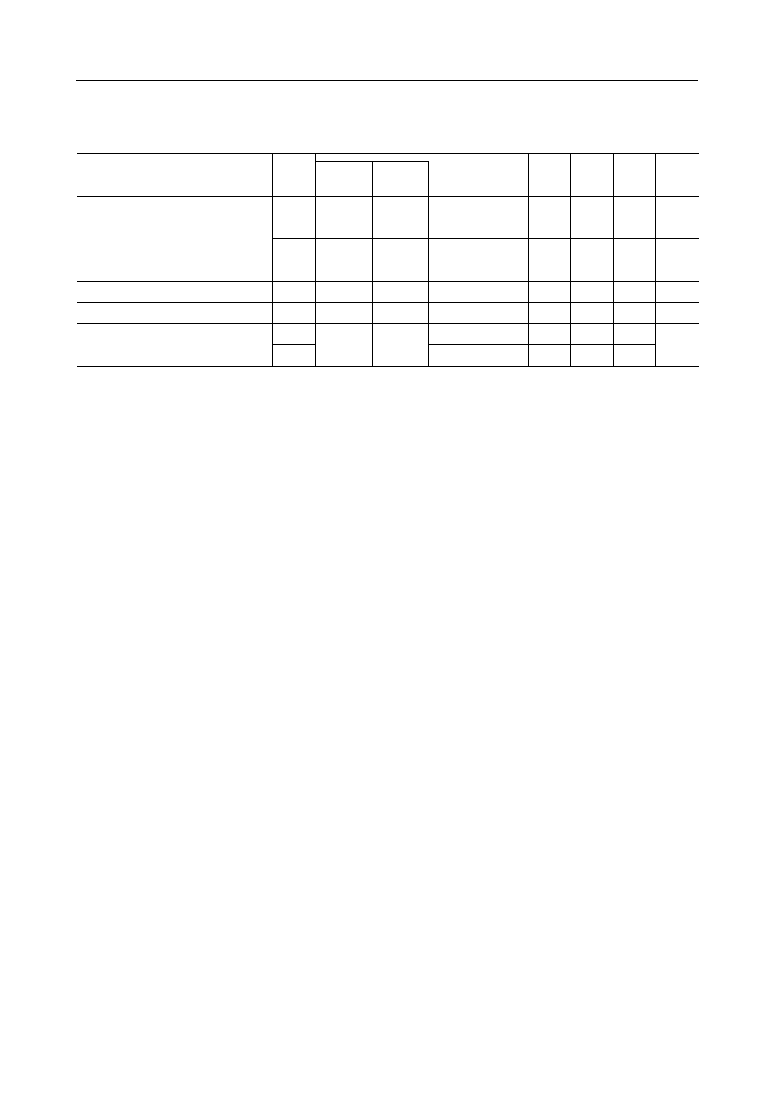
° Semiconductor
MSM6895/6896
21/43
AC Characteristics 3 (Receive Path) (Continued)
V
PP
187.0 mV
PP
224.6
VFTRP
--
--
VOR
--
V
PP
--
--
VOM
--
Maximum Output Amplitude
157.0
189.0
--
--
132.0
159.0
2.4
3.0
FTONE Output Amplitude
--
SPO
RPO
RMO0, RMO1
RPO, SPO
--
VRT1
--
RTONE1 Output Amplitude
--
191.5
161.0
135.5
mV
PP
RPO
VFTSP
R
L
= 3 kW +55 nF
R
L
= 20 kW
109.0 mV
PP
91.7
77.2
RPO
VRT0
--
RTONE0 Output Amplitude
--
*8
*7
Parameter
Symbol
Level
(dBV)
Max.
Unit
(V
DD
= 5 V ±5%, Ta = ≠10∞C to +70∞C)
Freq.
(Hz)
Condition
Typ.
Min.
Notes:
*7 DT, PDT, SDT, CRBT, IIT
*8 RBT, DT, T250

° Semiconductor
MSM6895/6896
22/43
AC Characteristics 4 (Ringing Tone Output Circuit)
0.45
VHOW
--
0.28
0.13
Howler Tone Output Amplitude
--
VST4
--
4.0
3.25
V
PP
0.65
0.47
0.25
VST3
1.98
V
PP
1.28
0.73
VST2
--
Calling Tone Output Amplitude
--
--
4.0
3.25
SA0-
SA1
730 W
to
VDG
VST1
*9
Volume 4
Volume 3
Volume 2
Volume 1
Parameter
Symbol
Level
(dBV)
Max.
Unit
(V
DD
= 5 V ±5%, Ta = ≠10∞C to +70∞C)
Freq.
(Hz)
Condition
Typ.
Min.
Note:
*9. IR-1, IR-2, SIR-1, SIR-2, CR, T1K, HR, SPT
Digital Interface Characteristics
Parameter
Symbol
Max.
Unit
(V
DD
= 5 V ±5%, Ta = ≠10∞C to +70∞C)
Condition
t
PDPATH
Typ.
Min.
Digital Path Delay Time
150
52
20
ns
BT1∆BR1, BR2
t
PDDATA
Digital Output (Data) Delay Time
150
52
20
ns
RD∆DB0 to DB7
Pull-up resistor : 10 kW
t
PDSCN
key Scanning Output Delay Time
1.9
--
0.5
ms
WR∆PO0, PO1, PO2, PO3, PO4
t
PDLA
Digital Output (Latch) Delay Time
1.9
--
0.5
ms
WR∆LA, LB, LC, LD, LML, LOSS
BT2∆BR1, BR2
t
PDCOD
CODEC Data Output Delay Time
100
50
20
ns
CK64∆B1T, B2T

° Semiconductor
MSM6895/6896
23/43
TIMING DIAGRAM
CK64
CK8
B1T or
B2T
B1R or
B2R
1
2
3
4
5
6
7
8
t
SX
t
XS
t
WS
tpd cod
MSB
B2
B3
B4
B5
B6
B7
B8
MSB
t
DS
t
DH
B2
B3
B4
B5
B6
B8
B7
Figure 1 CODEC Timing
Latch Output
DB0 to DB7
PO0 to PO4
WR
RD
CE
A0, A1
t
AW1
t
AW2
t
AR1
t
AR2
t
CW1
t
CW2
t
CR1
t
CR2
T
W
T
R
t
DW1
t
DW2
t
PDDATA
t
PDDATA
t
PDSCN
t
PDLA
Figure 2 Processor Interface Timing

° Semiconductor
MSM6895/6896
24/43
FUNCTIONAL DESCRIPTION
Control Data Description
Sounder control
WRITE Mode
Address Data
AD1 = 0, AD0 = 0
*1.
PDC: This bit is used for the CODEC power-down control. For making this bit valid, "0"s must be written to the control data bits
described in the later section.
PDC = 1: CODEC is in power-down mode. PDC = 0: CODEC is in operation mode.
*2.
When the HOW is indicated, the LOSS output is "1". Otherwise it is "0".
*3.
In the above specification, the data contents written later are valid. The signal of sounder path (SA0, SA1) and the signal of receive path
(RPO) can not be output simultaneously.
Control Data
Make/Break Timing *6
DB7
DB6
DB5
DB4
DB3
DB2
DB1
DB0
0
0
1
PDC
0
0
0
0
*1
0
0
0
0
1
0
0
1
0
0
0
1
1
0
1
0
0
0
1
0
1
0
1
1
0
0
1
1
1
1
0
0
0
1
0
0
0
1
0
1
0
1
0
1
1
1
1
0
0
1
1
0
1
1
1
1
0
X
X
X
X
Output Tone
(Hz)
Frequency
SPT
IR-1
IR-2
SIR-1
CR
HOW
SIR-2
T1K
HR
DT
SDT
RBT
BT
PDT
CRBT
*2
1
Wamble Tone
Wamble Tone
Wamble Tone
Wamble Tone
800 or
Wamble Tone
1
1
400
400
400/16
400
400
400/16
Wamble Tone
Make (Sec) Break1 (Sec) Break2 (Sec)
0.125
1
0.5
0.25
0.125
2
0.5
0.25
∑
--
--
2.25
Continuous
Continuous
0.5
0.25
0.125
Continuous
0.125
1
0.5
0.25
0.5
1
0.25
0.125
0.125
2
0.5
0.25
∑
--
--
--
--
--
--
--
--
Remarks
Tone Output:
SA0, SA1
Tone Output:
RPO, Refer to Table 2
and 4.
Suspends the tones above.

° Semiconductor
MSM6895/6896
25/43
Make
Break1
Break2
Control of function key acknowledge tone
WRITE Mode
Address Data
AD1 = 0, AD0 = 0
*4.
NTTC = 1 when the initial state is set. NTTC can be set as PBTC when the PB tone is set, but the data written into NTTC in later is valid.
When NTTC = 1, the FTONE (1) and FTONE (2) signals are output from SPO. When NTTC = 0, these signals are output from RPO.
NTTC = 1 when FTONE and PB tone is stopped.
*5.
When two or more signals are specified out of IIT, T250 and FTONE, the output signals are compounded by two or three tones.
*6.
The definition of Make/Break Timing is as follows;
Make/Break Timing *6
Control Data
DB7
DB6
DB5
DB4
DB3
DB2
DB1
DB0
0
1
1
X
X
0
0
1
X
X
0
1
0
X
0
1
1
X
1
0
0
0
0
0
0
0
0
0
1
0
1
1
Output Tone
(Hz)
Frequency
IIT
T250
FTONE (1)
FTONE (2)
400
250
1 k
1 k
Make (Sec) Break1 (Sec) Break2 (Sec)
0.25
Continuous
Continuous
0.1
0.25
∑
2.25
--
Suspends the all above tones
Suspends the IIT tone
Suspends the FTONE
Remarks
Tone output:
RPO, SPO
NTTC
*4
0
0
0
0
0
1
0
Suspends the T250 tone
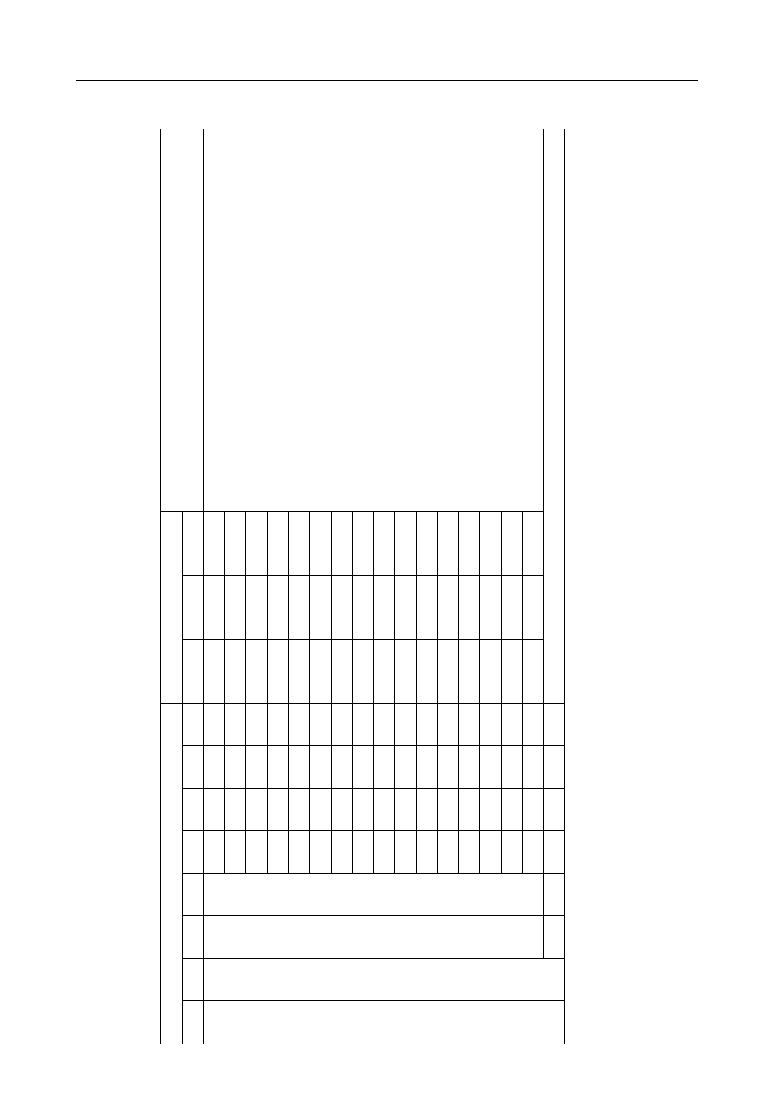
° Semiconductor
MSM6895/6896
26/43
PB tone control
WRITE Mode
Address Data
AD1 = 0, AD0 = 0
Control Data
Output PB Frequency
DB7
DB6
DB5
DB4
DB3
DB2
DB1
DB0
PB
Low
High
Remarks
1
0
1
PBTC
0
0
0
0
0
0
0
1
0
0
1
0
0
0
1
1
0
1
0
0
0
1
0
1
0
1
1
0
0
1
1
1
1
0
0
0
1
0
0
1
1
0
1
0
1
0
1
1
1
1
0
0
1
1
0
1
1
1
1
0
1
1
1
1
X
X
X
X
0
0
1
2
3
A
4
5
6
B
7
8
9
C
*
0
#
D
697 Hz
697 Hz
697 Hz
697 Hz
770 Hz
770 Hz
770 Hz
770 Hz
852 Hz
852 Hz
852 Hz
852 Hz
941 Hz
941 Hz
941 Hz
941 Hz
1209 Hz
1336 Hz
1477 Hz
1633 Hz
1209 Hz
1336 Hz
1477 Hz
1633 Hz
1209 Hz
1336 Hz
1477 Hz
1633 Hz
1209 Hz
1336 Hz
1477 Hz
1633 Hz
Suspends the PB tone
When PBTC = 0, the PB tone is output from the transmit path and the
receive path RPO.
The conditions of internal control signals are MUTN = 0 and NTTC = 0.
When PBTC = 1, the PB tone is output only from the receive path
SPO.
The PB signal is not output from the transmit path.
The conditions of internal control signals are MUTN = 1 and NTTC = 1.
When the initial state is set and the PB tone is suspended,
the conditions of internal control signals are MUTN = 1 and NTTC = 1.
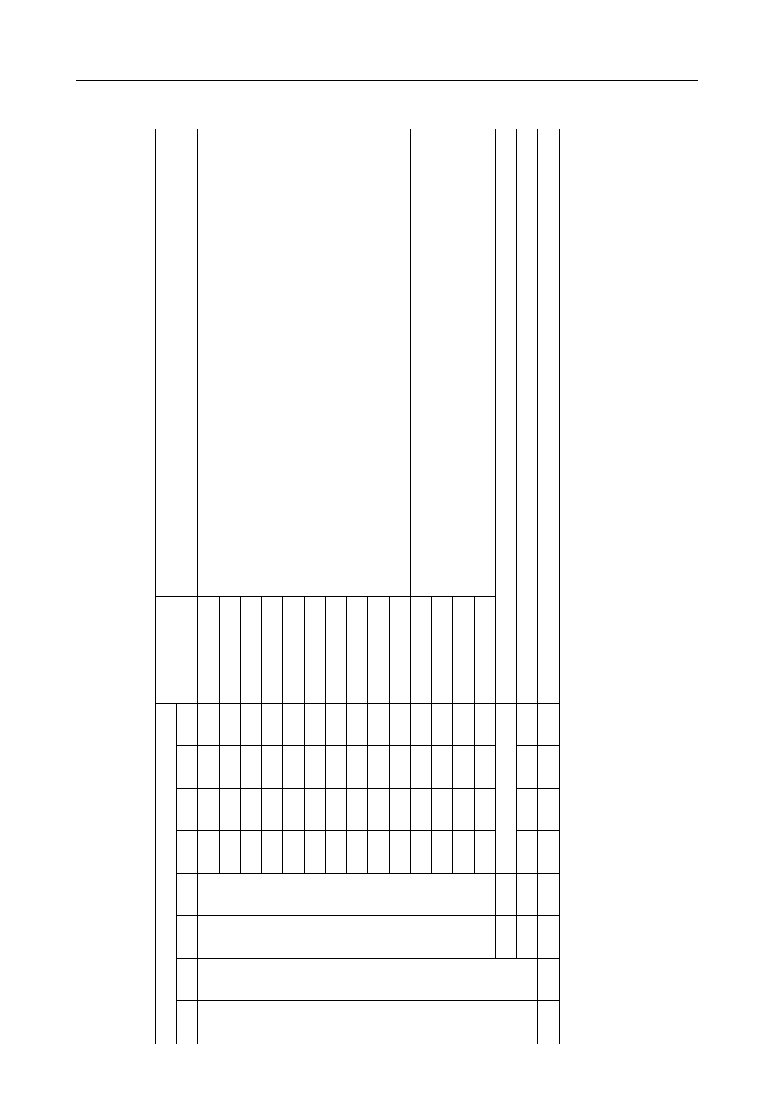
° Semiconductor
MSM6895/6896
27/43
Latch control and timer reset
WRITE Mode
Address Data
AD1 = 0, AD0 = 0
Control data
Latch output
DB7
DB6
DB5
DB4
DB3
DB2
DB1
DB0
1
1
1
0
0
0
0
1
0
0
1
0
0
0
1
1
0
1
0
1
0
1
1
0
0
1
1
1
1
0
0
0
1
0
0
1
1
0
1
0
1
0
1
1
1
1
0
0
1
1
0
1
1
1
1
0
1
1
1
1
0
0
0
0
0
0
0
0
0
0
1
1
1
1
0
0
Latch codes described above
LT1 = 1
LML1 = 1
LMX1 = 1
LT2 = 1
LML2 = 1
LMX2 = 1
LR = 1
LS = 1
LMN = 1
LMR = 1
LA = 1
LB = 1
LC = 1
LD = 1
Remarks
These latch are for internal control and used for control of speech path.
Initially all latch are set to "0". For details of speech path control, refer to Table 1 to 4.
Each latch can be specified independently.
The output at the LML pin is in "1" when either LML1, LML2, or LMR is in "1".
These general latches are for external control. LA, LB, LC, and LD correspond to
the external pin symbols and are set independently. Initially, all latches are set to "0".
Sets the corresponding latches listed above to "0".
Sets all latches listed above to "0".
Resets the watch dog timer.
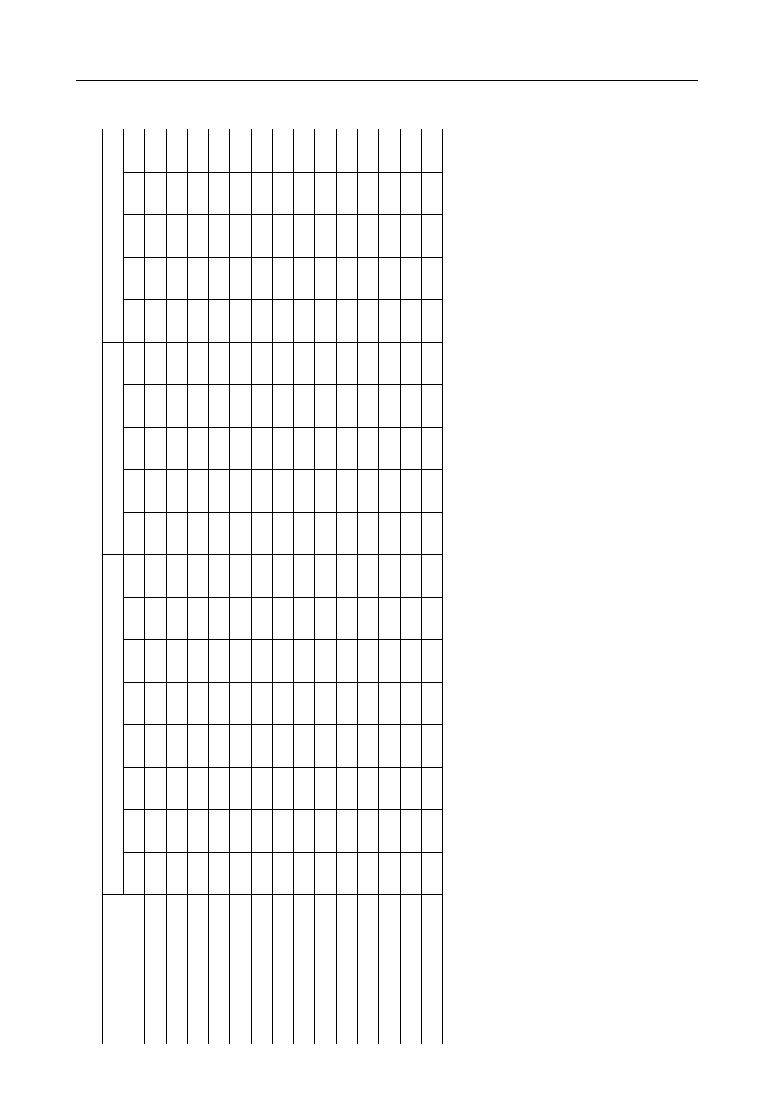
° Semiconductor
MSM6895/6896
28/43
Table 1. Transmit speech path setting list
Status Symbol
TA-1
TA-2
TA-3
TA-4
TA-5
TA-6
TA-7
TB-1
TB-2
TB-3
TB-4
TB-5
TB-6
TB-7
Control Symbol
LML1
LT1 LMX1 LML2
LT2 LMX2 LMN MUTN
0
0
X
--
--
--
X
X
0
1
0
--
--
--
0
1
0
1
0
--
--
--
1
1
0
1
1
--
--
--
0
1
0
1
1
--
--
--
1
1
0
1
X
--
--
--
X
0
1
X
X
--
--
--
X
X
--
--
--
0
0
X
X
X
--
--
--
0
1
0
0
1
--
--
--
0
1
0
1
1
--
--
--
0
1
1
0
1
--
--
--
0
1
1
1
1
--
--
--
0
1
X
X
0
--
--
--
1
X
X
X
X
SG
T
TMX1
PBt
Ht
Output Signal at T1O
1
--
--
--
--
--
1
--
--
--
1
--
--
--
--
--
1
1
--
--
--
--
1
--
--
--
--
--
1
--
--
--
--
--
1
--
--
--
--
--
--
--
--
--
--
--
--
--
--
--
--
--
--
--
--
--
--
--
--
--
--
--
--
--
--
--
--
--
--
--
SG
T
TMX2
PBt
Ht
Output Signal at T2O
--
--
--
--
--
--
--
--
--
--
--
--
--
--
--
--
--
--
--
--
--
--
--
--
--
--
--
--
--
--
--
--
--
--
--
1
--
--
--
--
--
1
--
--
--
1
--
--
--
--
--
1
1
--
--
--
--
1
--
--
--
--
--
1
--
--
--
--
--
1
Notes:
1. MUTN of Control Signal is set by PBTC (DB4).
MUTN = 1 when the initial state is set. MUTN = 0 when PBTC = 0. MUTN = 1 when PBTC= 1.
2. SG: Signal ground, T: Transmit signal, TMX1: Transmit addition signal 1, TMX2: Transmit addition signal 2, PBt: PB signal, Ht: Hold
tone signal
3. The output signals of T1O and T2O are the signals added by the signals indicated in "1"s in each column.
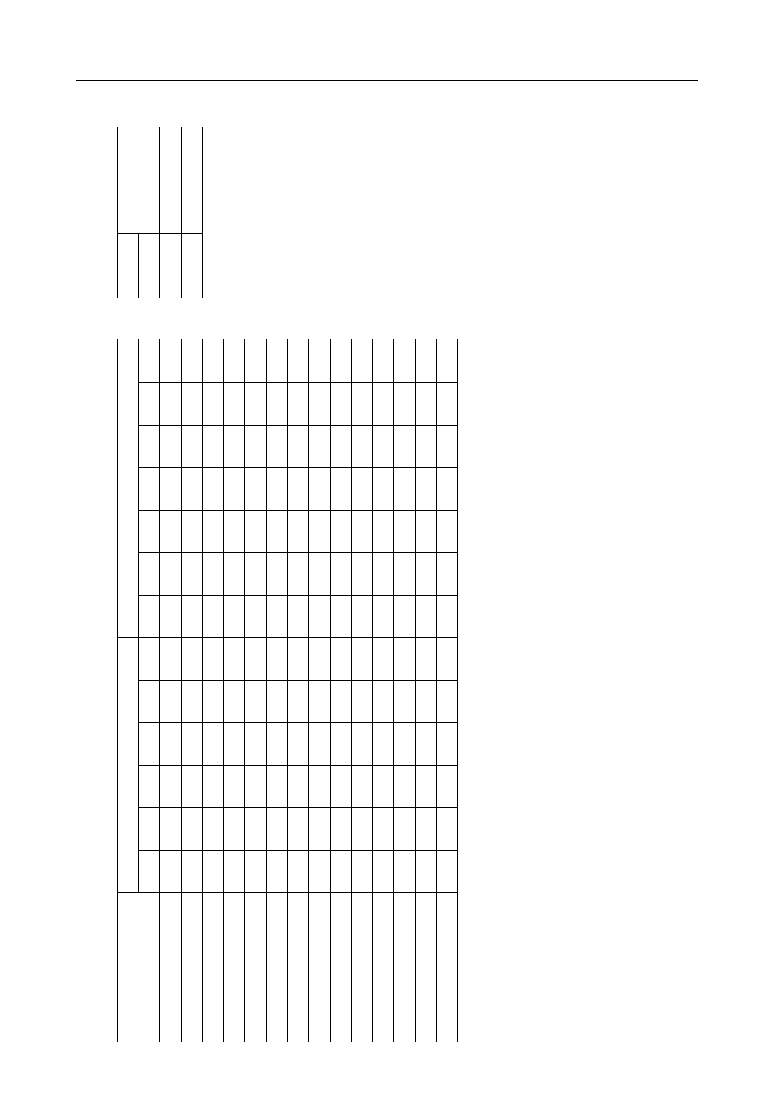
° Semiconductor
MSM6895/6896
29/43
Table 2. Receive speech path setting list (RPO output)
Table 3. Control of receive
main amplifier
Notes:
4. R1: Receive signal 1, R2: Receive signal 2, Ts: Side tone signal, RT0: DT, PDT, SDT, CRBT, and IIT, RT1: RBT, BT, and T250, FT:
FTONE and PBr: PB acknowledge signal.
5. Output Signal RPO is the signal added by the signal indicated in "1"s in each column.
6. "0"s of Control Signal NTTC are equivalent to "1"s of the Output Signals FT and PBr, and "1"s are equivalent to "0"s of Output Signals.
7. Control Signals MUTN and NTTC are the internal control signals. Initially, both signals are in "1"s. MUTN is controlled by PBTC
of controlling the PB tone.
MUTN = 0 when PBTC = 0. MUTN = 1 when PBTC = 1.
NTTC is controlled by PBTC of controlling the PB tone or NTTC of controlling the function key acknowledge tone, but the NTTC
data written later is valid.
NTTC = 0 when PBTC = 0. NTTC = 1 when PBTC = 1.
Control Signal
LR
0
1
RMO0 and RMO1
SG
Input signal to RMI
Output signal of
Status Symbol
RP-1
RP-2
RP-3
RP-4
RP-5
RP-6
RP-7
RP-8
RP-9
RP-10
RP-11
RP-12
RP-13
RP-14
Control Signal
LS
LT1
LT2
LMN MUTN NTTC
0
0
0
0
0
0
0
0
0
0
1
1
1
1
0
1
1
1
0
0
0
1
1
1
0
1
0
1
0
0
0
0
1
1
1
1
1
1
0
0
1
1
X
0
0
1
0
0
1
0
0
1
X
X
X
X
X
1
0
X
1
0
X
1
0
X
X
X
X
X
0/1
0/1
0/1
0/1
0/1
0/1
0/1
0/1
0/1
0/1
X
X
X
X
Output Signal at RPO
R2
Ts
RT0
RT1
FT
PBr
R1
--
1
1
1
--
--
--
1
1
1
--
1
--
1
--
--
--
--
1
1
1
1
1
1
--
--
1
1
--
1
--
--
1
--
--
1
--
--
--
--
--
--
1
1
1
1
1
1
1
1
1
1
1
1
1
1
1/0
1/0
1/0
1/0
1/0
1/0
1/0
1/0
1/0
1/0
--
--
--
--
1
1
1
1
1
1
1
1
1
1
1
1
1
1
1/0
1/0
1/0
1/0
1/0
1/0
1/0
1/0
1/0
1/0
--
--
--
--
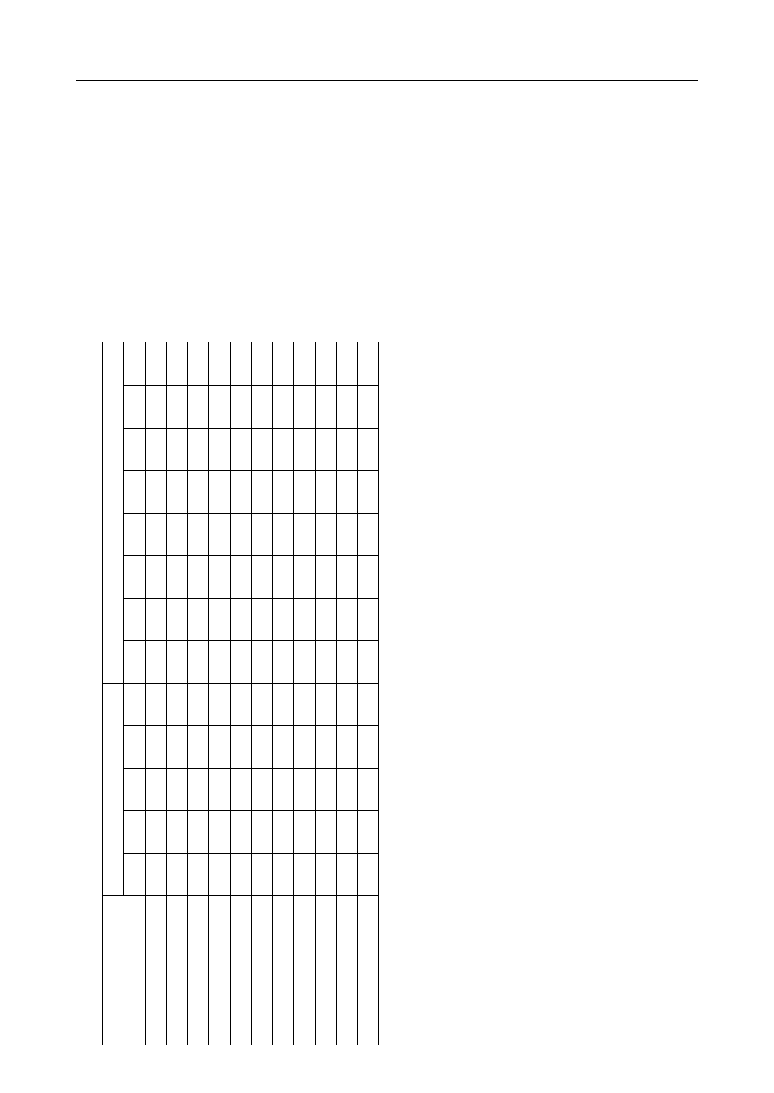
° Semiconductor
MSM6895/6896
30/43
Table 4. Receive speech path setting list (SPO)
Status Symbol
RS-1
RS-2
RS-3
RS-4
RS-5
RS-6
RS-7
RS-8
RS-9
RS-10
RS-11
Control Signal
LS
LT1
LT2 NTTC
LMR
0
0
0
1
1
1
1
1
1
1
1
0
0
1
0
0
0
0
1
1
1
1
X
X
X
0
1
0
1
0
1
0
1
X
X
X
0
0
1
1
0
0
1
1
0
1
0/1
X
X
X
X
X
X
X
X
Output Signal at SPO
SG
1
--
--
--
--
--
--
--
--
--
--
R1
--
--
--
--
1
--
1
--
1
--
1
R2
--
--
--
--
--
1
1
--
--
1
1
RT0
--
--
--
1
1
1
1
1
1
1
1
RT1
--
--
--
1
1
1
1
1
1
1
1
FT
--
1
0/1
1
1
1
1
1
1
1
1
PBr
--
1
0/1
1
1
1
1
1
1
1
1
Hr
--
--
1
--
--
--
--
1
1
1
1
Notes:
8. SG: Signal ground, R1: Receive signal 1, R2: Receive signal 2, Hr: Hold acknowledge tone, PBr: PB acknowledge tone, FT: FTONE,
RT0: DT, PDT, SDT, CRBT, and IIT and RT1: RBT, BT, and T250.
9. An Output Signal at SPO is the signal added by the signal indicated in "1"s in each column.
10. The Control Signal NTTC is defined equally to Notes : 7.

° Semiconductor
MSM6895/6896
31/43
Channel selector control
WRITE Mode
Address Data
AD1 = 0, AD0 = 1
Control Data
DB7
DB6
DB5
DB4
DB3
DB2
DB1
DB0
0
0
0
0
0
0
0
0
0
0
1
0
1
0
0
1
1
1
0
0
1
0
1
1
1
0
1
1
1
X
X
X
X
X
X
X
X
X
X
X
X
X
X
X
1
X
X
X
X
X
X
1
X
1
X
1
X
X
X
X
X
X
X
X
1
A1
A2
A3
A4
B1
B2
B3
B4
C
D1
D2
D3
D4
Symbol
Status
Main Connection Status
B1T®"1"
B1T®DOUT
B1T®BT1
B1T®BT2
B2T®"1"
B2T®DOUT
B2T®BT1
B2T®BT2
B1T®B2R
B1T®B1R
B2T®B2R
BT1∆BR1
BT2∆BR2
B1R∆No connection
B1R∆DIN
B1R∆BR1
B1R∆BR2
B2R∆No connection
B2R∆DIN
B2R∆BR1
B2R∆BR2
B2T®B1R
Remarks
Different groups (A, B, C, and D) are set
independently.
For setting the same group, the data written later is
valid.
Refer to Table 5 and 6 for details.
The initial statuses are A1 and B2.
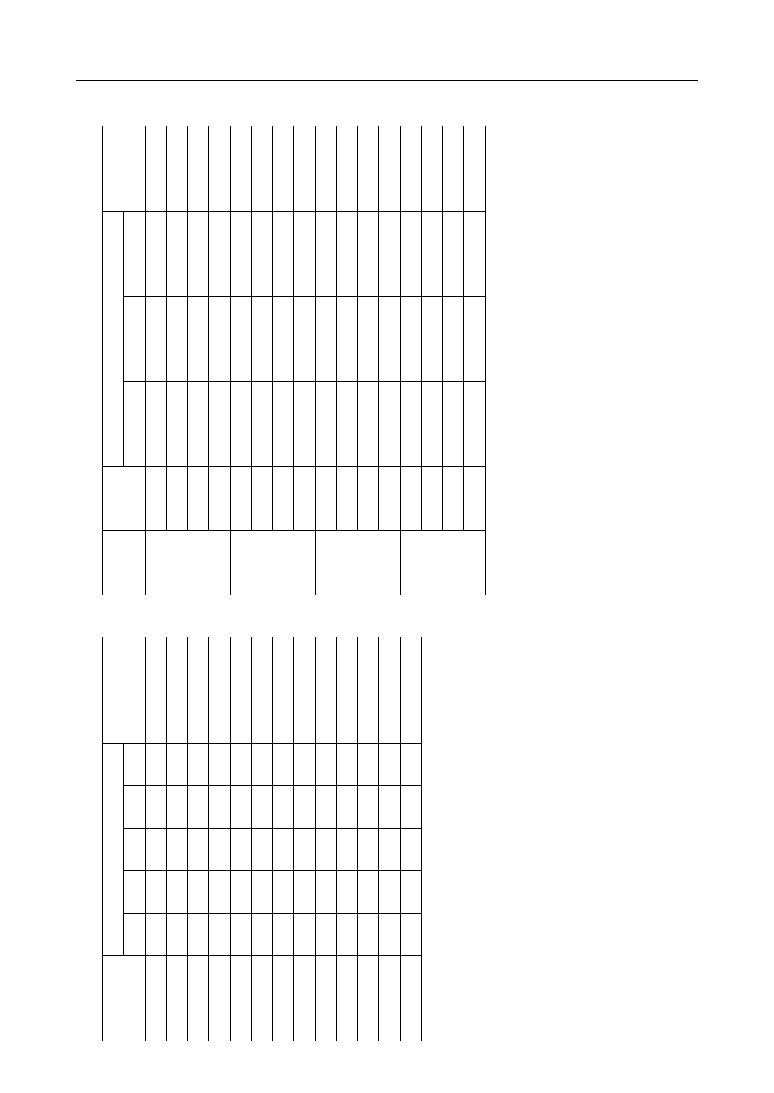
° Semiconductor
MSM6895/6896
32/43
Table 6. Output pin status by the combination of A and B
Table 5. Output pin connection status by channel selector control
Notes: 11. *1. According to the combination of A and B (Table 6).
*2. One of statuses A1 to A4 is held.
*3. One of statuses B1 to B4 is held.
*4. One of statuses A1 to A4 or one of statuses B1 to B4,
whichever is written later, is held.
When the setting of C is performed before the setting
of D group, the setting of D must be performed after
the setting of the group A and B.
12. The statuses of the pins indicated by "--" is not
affected.
13. DIN is connected to the digital input of CODEC and
DOUT is connected to the digital output of CODEC.
*5.
When writing is performed in the sequence of setting of A and
setting of B, the output status becomes B2R, and when writing
is performed in the sequence of setting of B and setting of A, the
output status becomes B1R.
Status
Symbol
A1
A2
A3
A4
B1
B2
B3
B4
C
D1
D2
D3
D4
1
DOUT
BT1
BT2
--
--
--
--
B2R
B1R
*2
*2
*2
--
--
--
--
1
DOUT
BT1
BT2
B1R
*3
B2R
*3
*3
*1
B1R
*1
*1
*1
B2R
*1
*1
--
--
--
--
--
*1
*1
B1R
*1
*1
*1
B2R
*1
--
*4
*4
BT1
*4
A1
A2
A3
BIT
B2T
DIN
BR1
Setting of A
Output Pin Connection Status
Initial Setting
Initial Setting
Remarks
A4
Setting of B
B1
B2
B3
B4
B1
B2
B3
B4
B1
B2
B3
B4
B1
B2
B3
B4
1
B2R
1
1
B1R
B1R or B2R
B1R
B1R
1
B2R
1
1
1
B2R
1
1
1
1
B2R
1
1
1
B2R
1
B1R
B1R
B1R or B2R
B1R
1
1
B2R
1
1
1
1
B2R
1
1
1
B2R
1
1
1
B2R
B1R
B1R
B1R
B1R or B2R
DIN
BR1
BR2
Output Pin Connection Status
Initial Setting
DIN *5
BR1 *5
BR2 *5
Remarks
*1
*1
*1
B1R
*1
*1
*1
B2R
--
*4
*4
*4
BT2
BR2
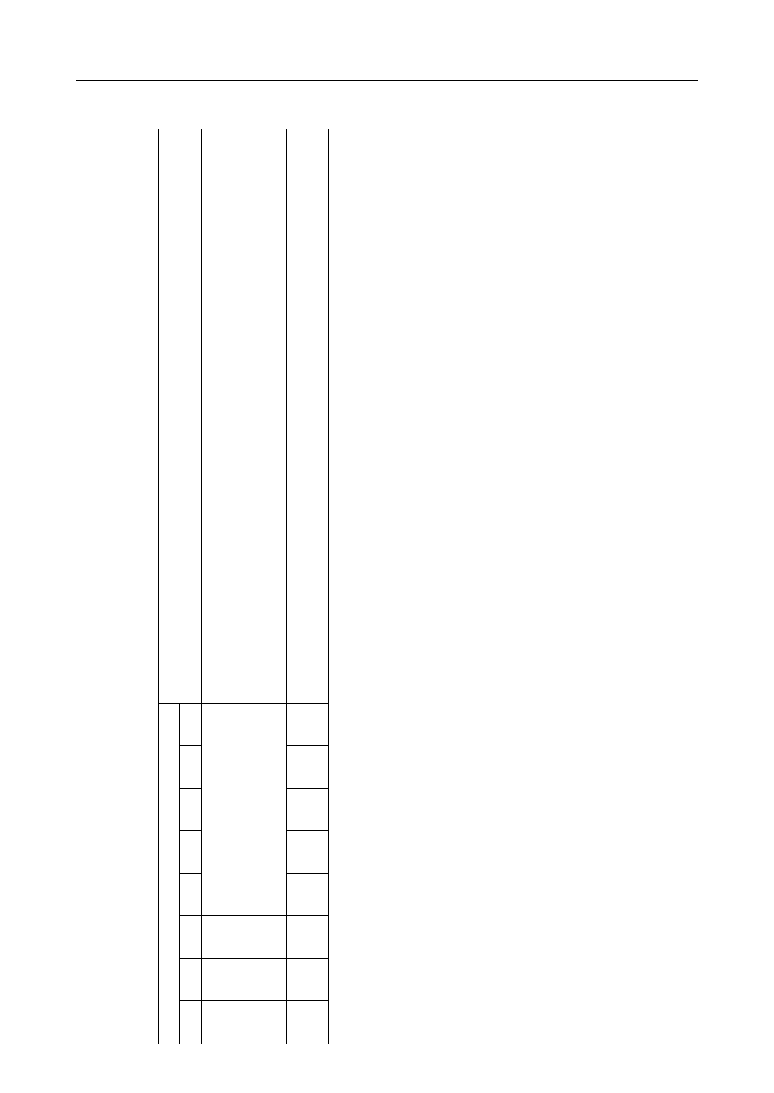
° Semiconductor
MSM6895/6896
33/43
key scanning output control and interrupt
WRITE Mode
Address Data
AD1 = 1, AD0 = 0
Control Data
DB7
DB6
DB5
DB4
DB3
DB2
DB1
DB0
0
0
0
Output Data
1
X
X
X
X
X
X
X
Remarks
Resets the INTT output and sets to "1".
This control data is valid only when written, it is not held.
Initially, PO4 to PO0 are left open.
When the data is "0", the output goes to "0", when the data is "1", the output is left open.
The output statuses are held until the data is rewritten.
The data set in DB4 to DB0 is output from output pins PO4 to PO0, respectively.
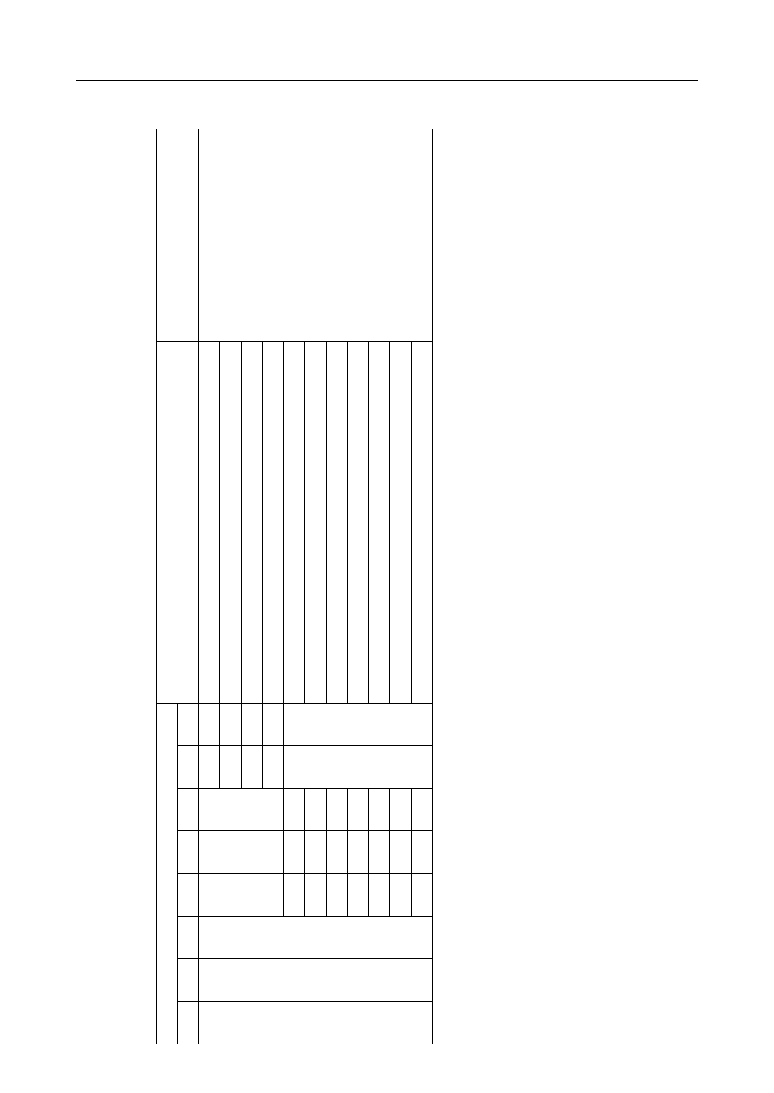
° Semiconductor
MSM6895/6896
34/43
Sounder, volume, and tone combination
WRITE Mode
Address Data
AD1 = 1, AD0 = 1
Control Data
DB7
DB6
DB5
DB4
DB3
DB2
DB1
DB0
0
0
X
X
X
X
0
0
0
1
1
0
1
1
0
0
0
0
0
1
0
1
0
0
1
1
1
0
1
1
1
0
1
1
1
X
X
Remarks
The setting of volume and tone
combination is performed
simultaneously, not
independently.
Initially the high volume is set,
and tone combination is set
externally.
Control
Volume 1 (High)
Volume 2 (Medium)
Volume 3 (Low1)
Volume 4 (Low2)
Tone combination setting (Initial setting) by external control (SW0, SW1)
Tone combination 1 (1.0 kHz and 1.3 kHz, 16 Hz Wamble period)
Tone combination 2 (0.8 kHz and 1.0 kHz, 16 Hz Wamble period)
Tone combination 3 (0.8 kHz and 1.0 kHz, 8 Hz Wamble period)
Tone combination 4 (0.5 kHz and 0.65 kHz, 16 Hz Wamble period)
Tone combination 5 (0.4 kHz and 0.5 kHz, 16 Hz Wamble period)
Tone combination 6 (0.4 kHz and 0.5 kHz, 8 Hz Wamble period)

° Semiconductor
MSM6895/6896
35/43
CODEC power down control
WRITE Mode
Address Data
AD1 = 1, AD0 = 1
Contorol Data
DB7
DB6
DB5
DB4
DB3
DB2
DB1
DB0
0
1
X
X
X
0
0
0
1
0
1
1
1
0
1
1
1
1
0
0
Remarks
CODEC power-down is controlled by PDC (DB4) during sounder
Control
control. (Initial setting)
PDC = 0 CODEC power-on
PDC = 1 CODEC power-down
CODEC Transmit power-down
CODEC Receive power-down
CODEC Transmit and Receive power-down
CODEC power-down release
Data written later is valid.
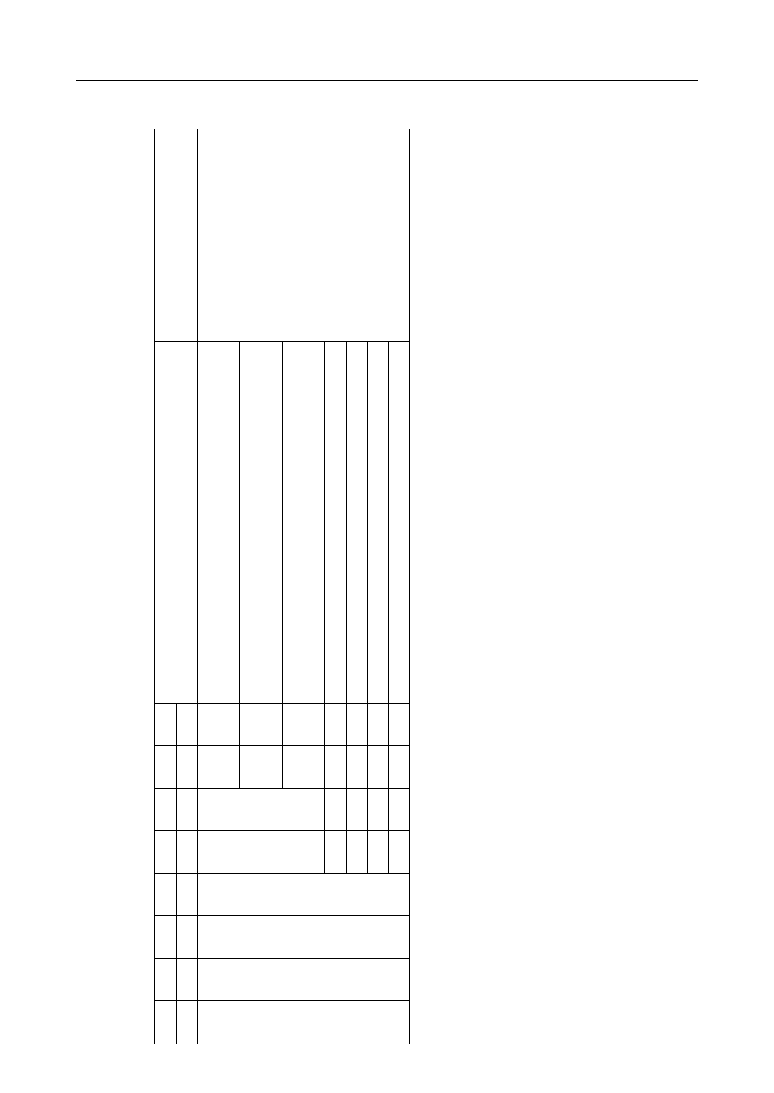
° Semiconductor
MSM6895/6896
36/43
Gain control
WRITE Mode
Address Data
AD1 = 1, AD0 = 1
DB7
DB6
DB5
DB4
DB3
DB2
DB1
DB0
DB7
1
0
X
X
X
X
0
0
0
1
1
X
1
1
X
X
1
0
X
X
0
1
X
X
0
0
X
X
Remarks
The gain setting of the transmit path
and the receive path can be performed
simultaneously, not independently.
Control
Sets the transmit PB tone and hold tone level at the typical
value.(Initial setting)
Sets the transmit PB tone and hold tone level by 3 dB below the
typical value.
Sets the transmit PB tone and hold tone level by 6 dB below the
typical value.
Sets the receive gain at the typical value. (Initial setting)
Sets the receive gain by 3 dB above the typical value.
Sets the receive gain by 6 dB above the typical value.
Sets the receive gain by 9 dB above the typical value.

° Semiconductor
MSM6895/6896
37/43
Howler tone color combination
WRITE Mode
Address Data
AD1 = 1, AD0 = 0
Key scanning data read out
READ Mode
Address Data
AD1 = 1, AD0 = 0
Control Data
DB7
DB6
DB5
DB4
DB3
DB2
DB1
DB0
1
1
X
X
X
X
X
0
1
Control
Howler tone frequency: 0.8 kHz
Howler tone frequency: 1.0 kHz and 1.3 kHz, 16 Hz Wamble period
Remarks
Initial setting
DB7
DB6
DB5
DB4
DB3
DB2
DB1
DB0
PI7
PI6
PI5
PI4
PI3
PI2
PI1
PI0
Control
The data input to the pins PI7 to PI0 is output from DB7 to DB0, respectively.
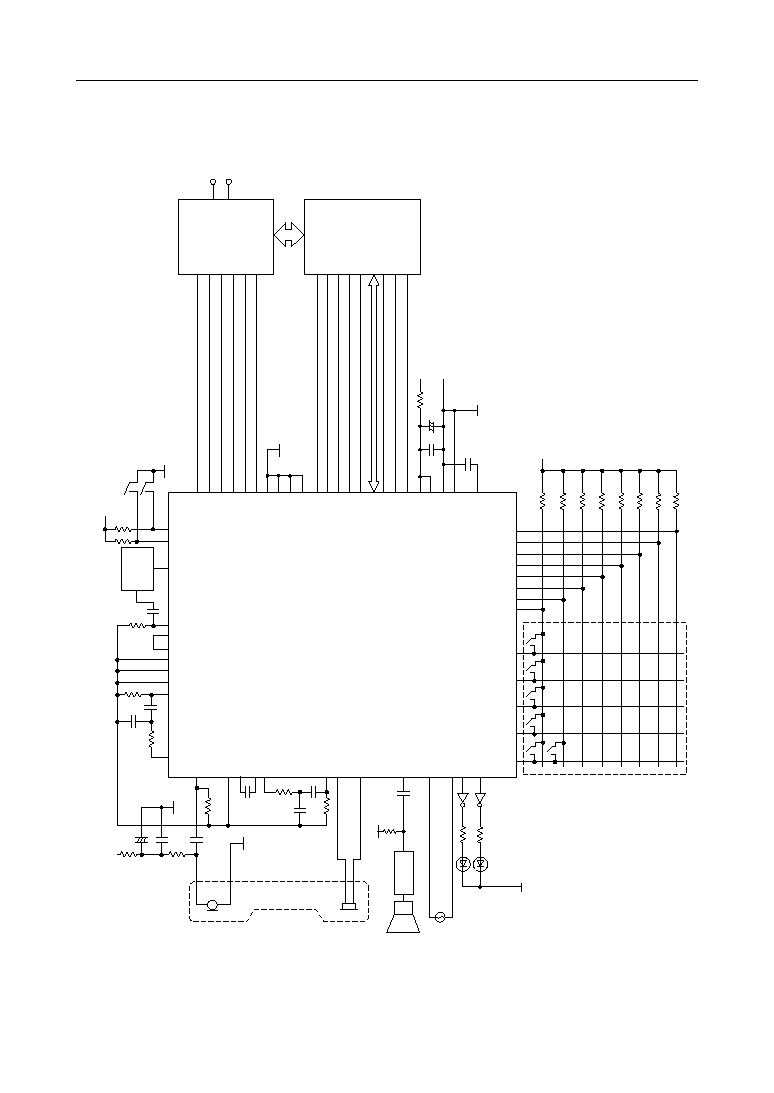
° Semiconductor
MSM6895/6896
38/43
APPLICATION CIRCUIT
Handset
Speaker
AG
100 k
W •
2
0.47
m
F
DG
1
m
F
+5 V
Line
Line Interface
Controller
DG
AG
100 k
W
LED
AG
0.47
m
F
Driver
+5 V analog
+5 V
1
m
F
10
m
F
100 k
W
100 k
W •
8
AG
+5 V analog
0.1
m
F
1
m
F
10
m
F
+
Melody Tone
Generation
+
DG
Swith the sounder
tone combination
TPAO
TPBI
TMX1I
TMX2I
R2I
T1O
CAI
MLDY
LML
SW0
SW1
B1T
B1R
B2T
B2R
CK8
CK64
BT1
BT2
TEST
CK1536
WR RD
AD0
DB7 to DB0
INTT
TIME
RESET
VA
VD
VAG
VDG
AD1
VSGC
PO0
PO1
PO2
PO3
PO4
PI0
PI1
PI2
PI3
PI4
PI5
PI6
PI7
TPAI
VSG
CAO
R1I RPO
RMI
RMO0
RMO1
SPO
SAO
SA1
LA
LB
MSM6895
Sounder
SW Matrix
0 V analog
CE
0-20
W

° Semiconductor
MSM6895/6896
39/43
Application circuit at the PCM Signal Data Rate of 192, 384, 768, 1536 and 2048
kbps.
BCLOCK signal
When the PCM signal data rate is one of 192, 384, 768, 1536, and 2048 kbps, input the 9-bit burst
clock corresponding to the frequency equivalent to each of the data rates, as CK64 signal.
PCMIN/OUT
CK64
CK8
125 mS
1 2 3 4 5 6 7 8
1 2 3 4 5 6 7 8 9
Burst clock generator
Burst Clock
CK64
CK8
MSM6895/6896
Equivalent to the 74LS161
+5 V
16
11 10
9
1
2
7
8
0 V
Continuous Clock
8 kHz
Syncronous Signal
Syncronous Signal
Continuous Clock
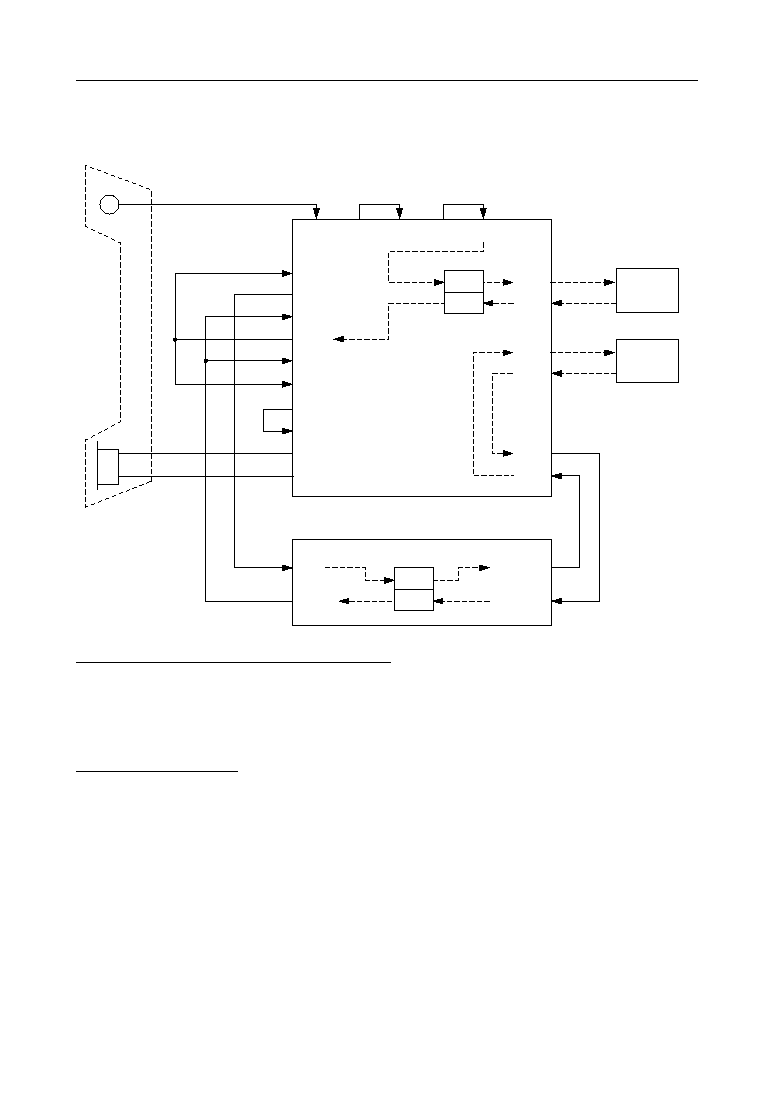
° Semiconductor
MSM6895/6896
40/43
Application Circuit of Three-party Speech Path
TPAI
CAO
T2O
TMX1I
R2I
RMO0
(A)
RMO1
RPO
M
Note:
(A) indicates
the voice signal of
the A speaker
Speaker A
Handset
Speaker B
(B)
TPAO
(A + C)
(B)
B1T
B1R
TPBI
T1O
CAI
TMX2I
AD
R1I
RMI
(B + C)
(A + B)
(C)
(B)
(C)
(B)
DA
(A + B)
(C)
Speaker C
B2T
B2R
BR2
BT2
AD
DA
PCMOUT
PCMIN
AIN
AOUT
(A + B)
(C)
MSM6895
MSM7508
(A)
(A + C)
Speech path setting (Speech through a handset)
Transmit:
TA-4 (LT1 = 1, LMX1 = 1, LMN = 0, MUTN = 1)
TB-4 (LT2 = 1, LMX2 = 1, LMN = 0, MUTN = 1)
Receive:
RP-8 (LT1 = 1, LT2 = 1, LMN = 0, MUTN = 1, LR = 1)
Channel selector control
A2, B4
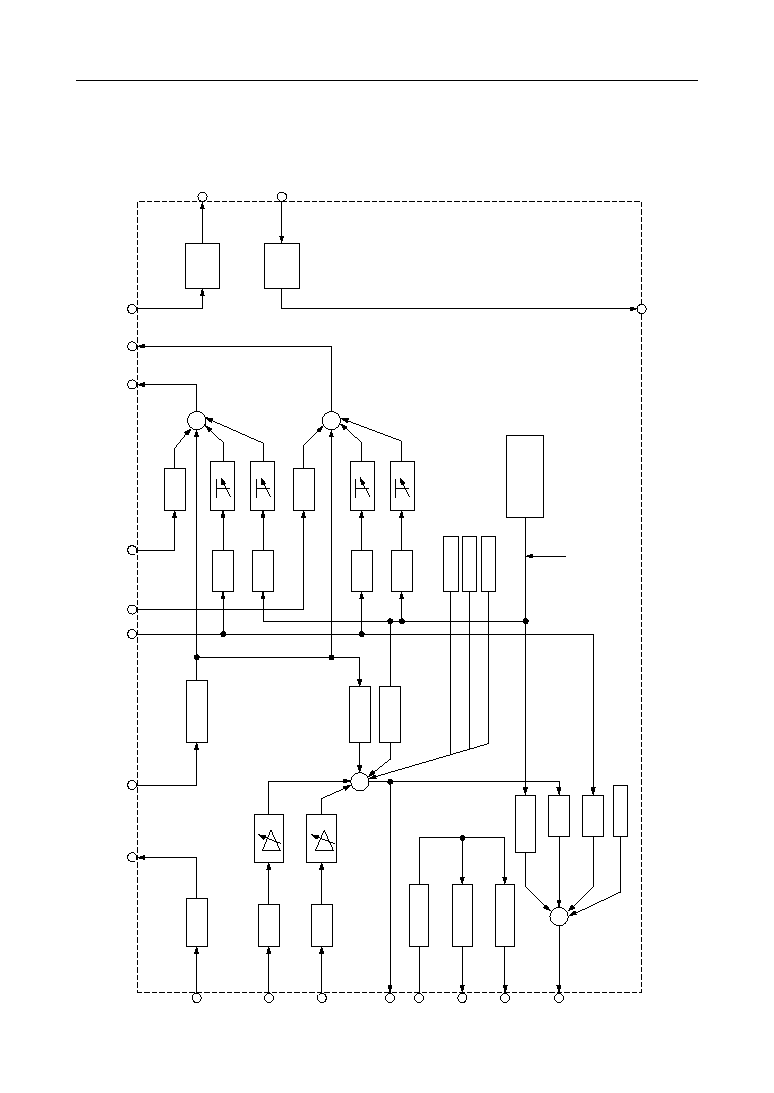
° Semiconductor
MSM6895/6896
41/43
SPEECH PATH GAIN
TPAI
R1I
R2I
RPO
RMI
RMO0
RMO1
SPO
+20 dB
≠6 dB
≠6 dB
+15.3 dB
X 1
X≠1
≠6.8 dB
0 dB
≠3 dB
+
+
+
≠
0, 3, 6, 9 dB
0, 3, 6, 9 dB
+17.7 dB
≠2 dB
≠8.8 dB
+6 dB
0 dB
0 dB
≠2 dB
+6 dB
≠6.8 dB
0, ≠3, ≠6dB
0, ≠3, ≠6dB
0, ≠3, ≠6 dB
0, ≠3, ≠6 dB
AD
0 dB
DA
0 dB
TPAO
TPBI
MLDY
TMX2I
TMX1I
T1O
T2O
CAI
(Maximum input of
1.2 V
op
)
CAO
(Maximum input of
1.2 V
op
)
RTONE1
RTONE2
FTONE
91.7 mV
PP
(DT, PDT, SDT, CRBT)
157 mV
PP
(RBT, BT, T250)
161 mV
PP
189 mV
PP
≠21.4 dBV (240 mV
PP
per signal)
PB
tone
Generator
FTONE

° Semiconductor
MSM6895/6896
42/43
RECOMMENDATIONS FOR ACTUAL DESIGN
∑ To assure proper electrical characteristics, use bypass capacitors with excellent high frequency
characteristics for the power supply and keep them as close as possible to the device pins.
∑ Connect the AG pin and the DG pin each other as close as possible. Connect to the system
ground with low impedance.
∑ Mount the device directly on the board when mounted on PCBs. Do not use IC sockets. If an
IC socket is unavoidable, use the short lead type socket.
∑ When mounted on a frame, use electro-magnetic shielding, if any electro-magnetic wave
source such as power supply transformers surround the device.
∑ Keep the voltage on the V
DD
pin not lower than ≠0.3 V even instantaneously to avoid latch-
up phenomenon when turning the power on.
∑ Use a low noise (particularly, low level type of high frequency spike noise or pulse noise)
power supply to avoid erroneous operation and the degradation of the characteristics of these
devices.
∑ Unused analog input pins must be connected to the VSG pin and unused digital pins must
be connected to the GND pin.

° Semiconductor
MSM6895/6896
43/43
(Unit : mm)
PACKAGE DIMENSIONS
Notes for Mounting the Surface Mount Type Package
The SOP, QFP, TSOP, SOJ, QFJ (PLCC), SHP and BGA are surface mount type packages, which
are very susceptible to heat in reflow mounting and humidity absorbed in storage.
Therefore, before you perform reflow mounting, contact Oki's responsible sales person for the
product name, package name, pin number, package code and desired mounting conditions
(reflow method, temperature and times).
QFP80-P-1420-0.80-BK
Package material
Lead frame material
Pin treatment
Solder plate thickness
Package weight (g)
Epoxy resin
42 alloy
Solder plating
5 mm or more
1.27 TYP.
Mirror finish










































